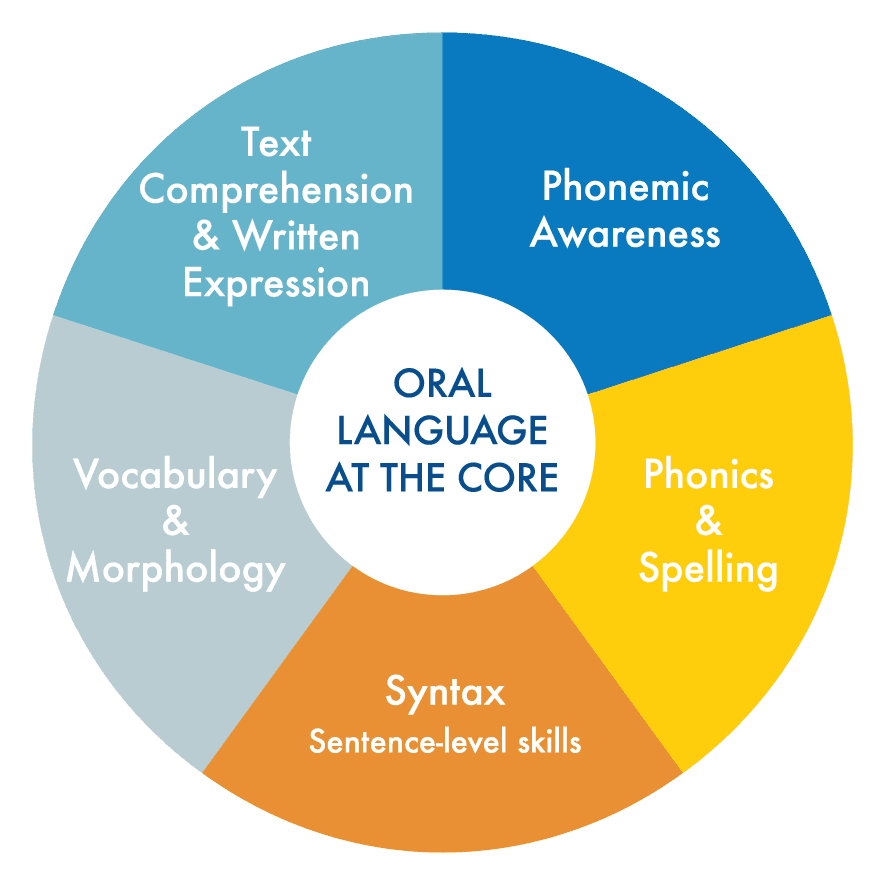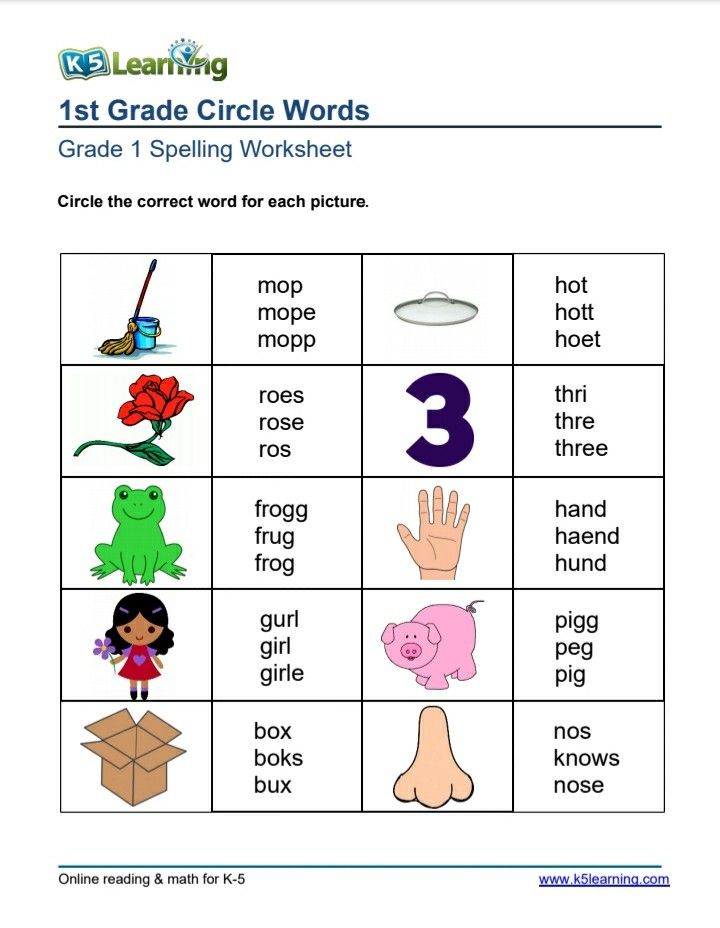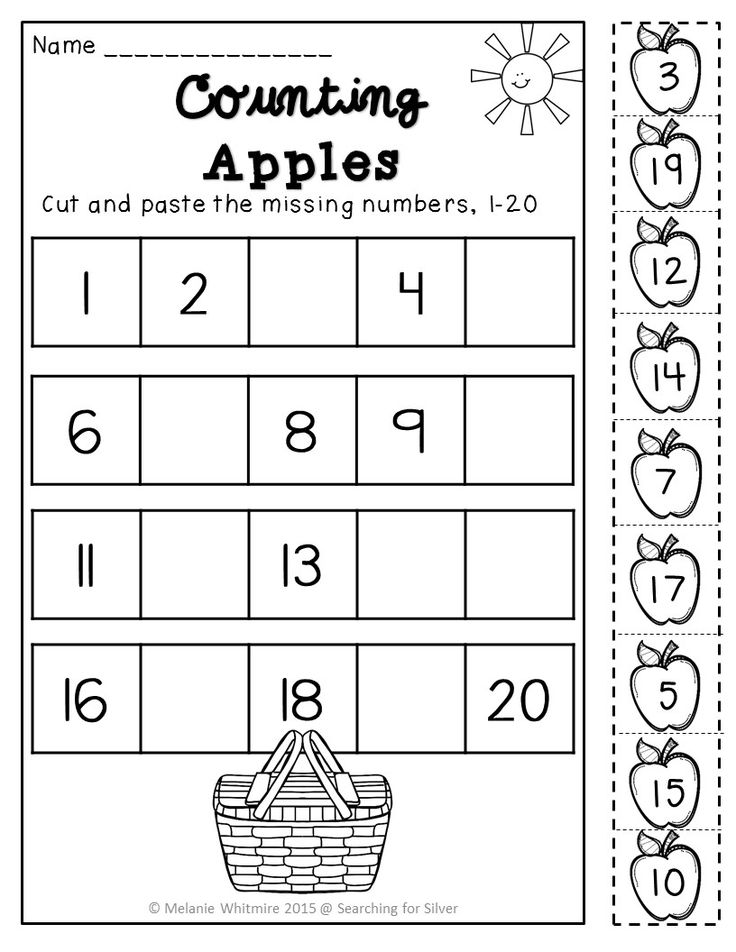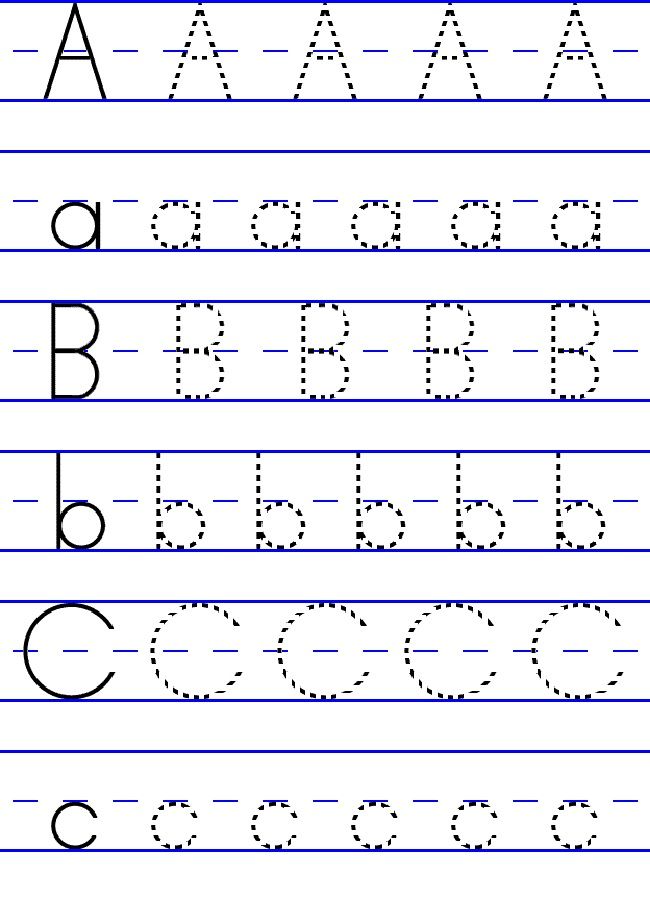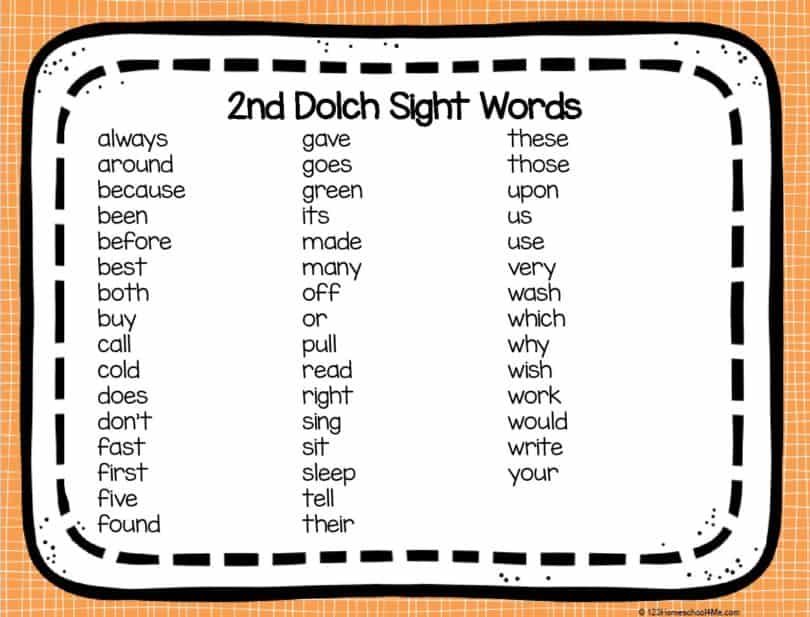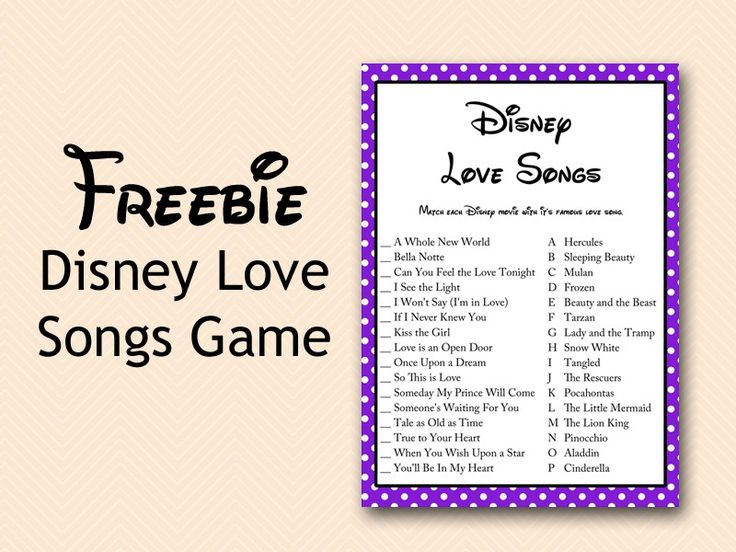Reading strategies for elementary students
13 Powerful Reading Strategies for Young Readers
Written by: Angie Olson
- Share
- Tweet
What’s better on a cold day than curling up with a good book? Not much. Unfortunately, not everyone can simply dig into a book, as learning to read doesn’t come easily to every child. There are many processes working simultaneously to create the miracle known as reading. Literacy experts agree on several powerful strategies that will strengthen the reading process for your lucky little learners.
1. Reread
Students must often revisit text to clarify understanding. When a student neglects to reread, comprehension can suffer. Using passages (either printable or digital), like the one seen below, can help students practice this skill. Model rereading with your students. Our youngest readers may not know that it’s OK to reread!
2. Activate Prior Knowledge
Before reading, the student should look at the title and ask himself what he already knows about the topic. Prior knowledge can significantly improve understanding. Ask your lucky little learners what they already know about a topic. Using KWL charts (what I know, what I want to know, and what I learned) to collect knowledge before, during, and after reading is a great way to activate background knowledge. This skill can also be demonstrated during whole group read alouds too.
3. Use Context Clues
Context clues help the reader to differentiate between similar words in a passage. Using the words around the unknown word, your students are able to determine what makes sense. Try using Digital Reading Passages to help your primary readers decipher word meaning using context clues and other vocabulary strategies.
Download Digital Context Clues Toothy HERE
4. Infer Meaning
Making an inference requires higher order thinking skills. Inferencing is a necessary part of reading throughout school and is also an important skill in life in general. Tell your students that inferencing is like making a guess based on facts and evidence.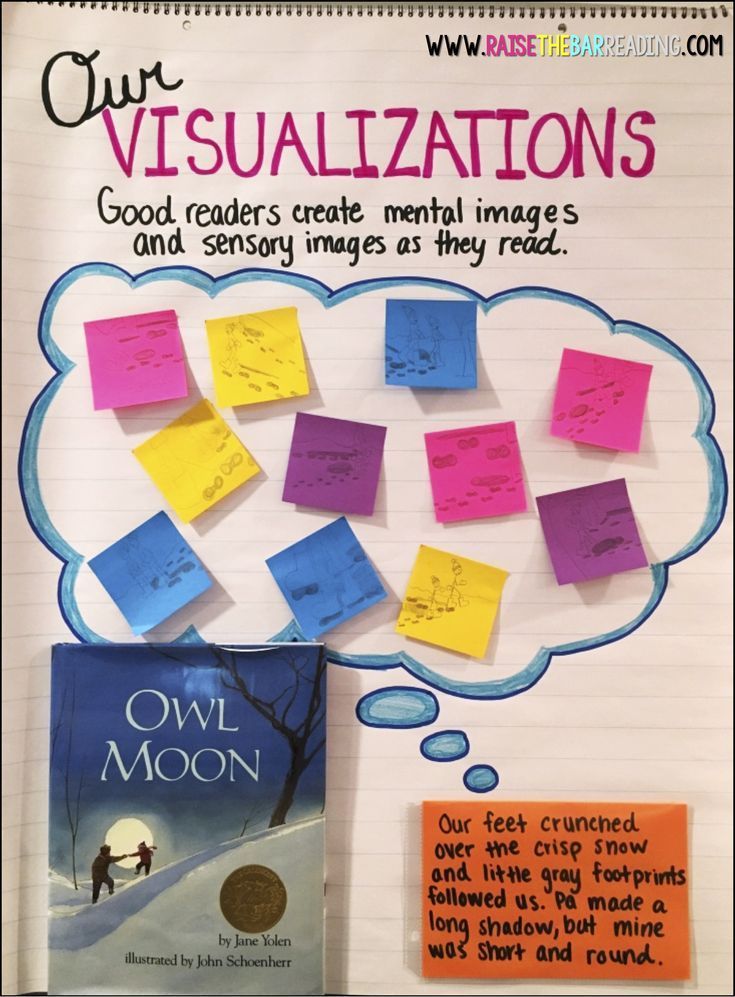
5. Think Aloud
The think aloud strategy is usually modeled by the teacher, so that students can see the meta-cognitive process. Your students can imitate this think-aloud process in order to be more transparent with their meta-cognition. This means they are actually thinking (and speaking) about their own thinking and reading processes.
6. Summarize the Story
The point of reading is, after all, comprehension, so it’s so important for your lucky little learners to be able to effectively retell what he or she has read. Knowing the main idea and details is essential in retelling. This can be practiced using the Digital Reading Passages. Students will read the passage on the screen and then have two choices to pick the summary of the paragraph.
Download Digital Summarizing Toothy HERE
7. Locate Key Words
Finding key words is helpful when summarizing a passage. When answering questions about a selection, locating key words helps the reader use important information quickly.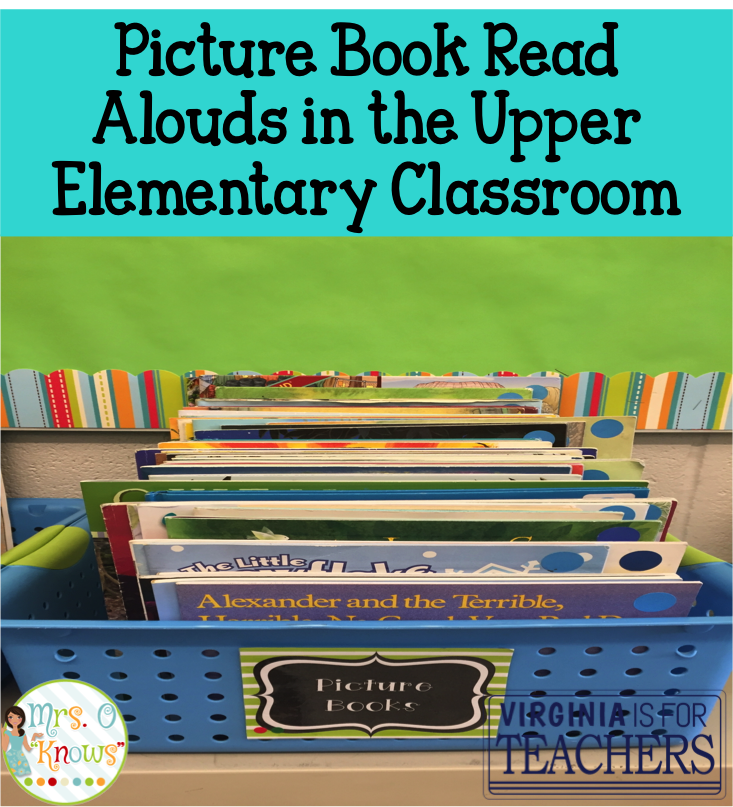 This is a concept that needs to be taught and modeled. The teacher will need to demonstrate and explain how to scan a passage to locate key words.
This is a concept that needs to be taught and modeled. The teacher will need to demonstrate and explain how to scan a passage to locate key words.
8. Make Predictions
Regardless of the media we’re consuming (video, audio, print), we are constantly making predictions. This is the same for even our young readers and viewers. This building block of meta-cognition is essential in achieving deep understanding of text. Have your students make predictions as they read passages from our Digital Reading Passages.
Download Digital Toothy HERE
9. Use Word Attack Strategies
Strong decoding skills enable fluent reading and strong comprehension. Chunking, rereading, and connecting letters to sounds are effective strategies for decoding words. The sentence scrambles bundle is one of my favorite ways to help students with sight words, decoding, and fluency!
10. Visualize
Good readers picture what they’re reading. Sometimes called a ‘mind movie’, this strategy of visualizing can help the reader in connecting to and comprehending text. I love helping my lucky little learners visualize by drawing pictures of what they are reading (or what I read aloud).
I love helping my lucky little learners visualize by drawing pictures of what they are reading (or what I read aloud).
11. Use Graphic Organizers
Helping the reader arrange information is a powerful component of comprehension. Graphic organizers can be used for determining cause and effect, character traits, problem and solution, and more. The nice thing about a graphic organizer is that they are easy for students to draw because they are typically basic shapes like squares and circles with a heading on top. Graphic organizers are great for putting into reading notebooks.
12. Ask Questions
Like inferencing, we are always asking questions – when reading, watching, or listening. Developing good questions is a foundational piece of meta-cognition in readers. Encourage your littlest readers to write down questions on sticky notes or in their reading notebooks. These questions can be revisited at the guided reading table or during independent reading time when the teachers is available.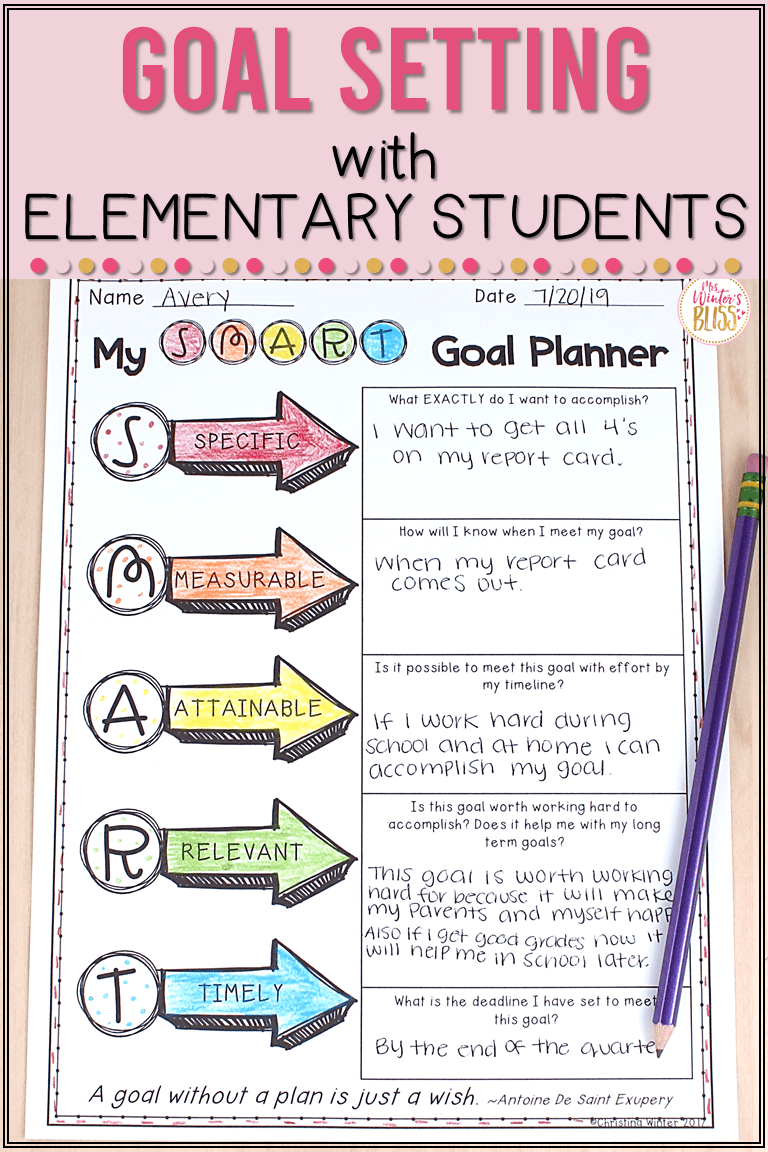
13. Monitor and Repair Understanding While Reading
The essence of meta-cognition is realizing when you’ve lost meaning as a reader. This critical step in the reading process is what ultimately separates competent readers from word-callers. This is so important to practice in reading centers (small groups) or as a whole class. Your learners need help monitoring their own understanding before they do it on their own!
Becoming a proficient, engaged reader is a long process, and doesn’t happen by accident. Early, consistent exposure to books helps create a love of reading in children. By combining these strategies, the child who loves listening to stories can become competent and confident in reading independently! Help your lucky little learners by teaching these 13 reading strategies and using these ready-to-go reading products!
- Share
- Tweet
Reading Strategies for Elementary Students
Reading is a fundamental skill that we all use every single day.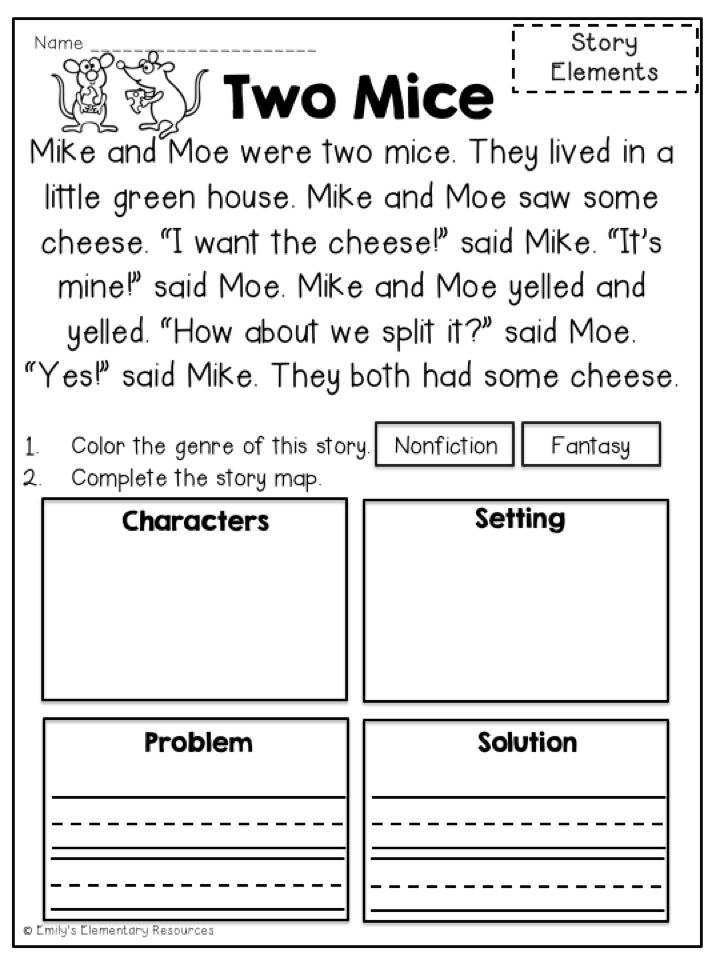 Teaching reading strategies for elementary students is so very important.
Teaching reading strategies for elementary students is so very important.
We read newspapers, books, directions, text messages, recipes, emails, safety warnings…Reading is everywhere!
It’s no secret that developing proficient reading skills from a young age is essential not only for academic success, but for success in all areas and stages of life!
However, reading can be a challenging skill that many students struggle to master. And as teachers, we want nothing more than to help our students become comfortable and confident readers.
Guest post by Margot Carmichael from Carmichael’s Class
Growing up, I loved to read. It was my greatest passion and the perfect escape from reality. It came naturally to me and luckily, I never really struggled with it. But teaching in a school with an extremely high population of ELL students, I’ve spent years watching my kids struggle with learning how to read.
So, how can we better equip ourselves to help our students overcome their reading struggles?
Things like patience, dedication, and encouragement are certainly cornerstones of teaching reading to primary learners.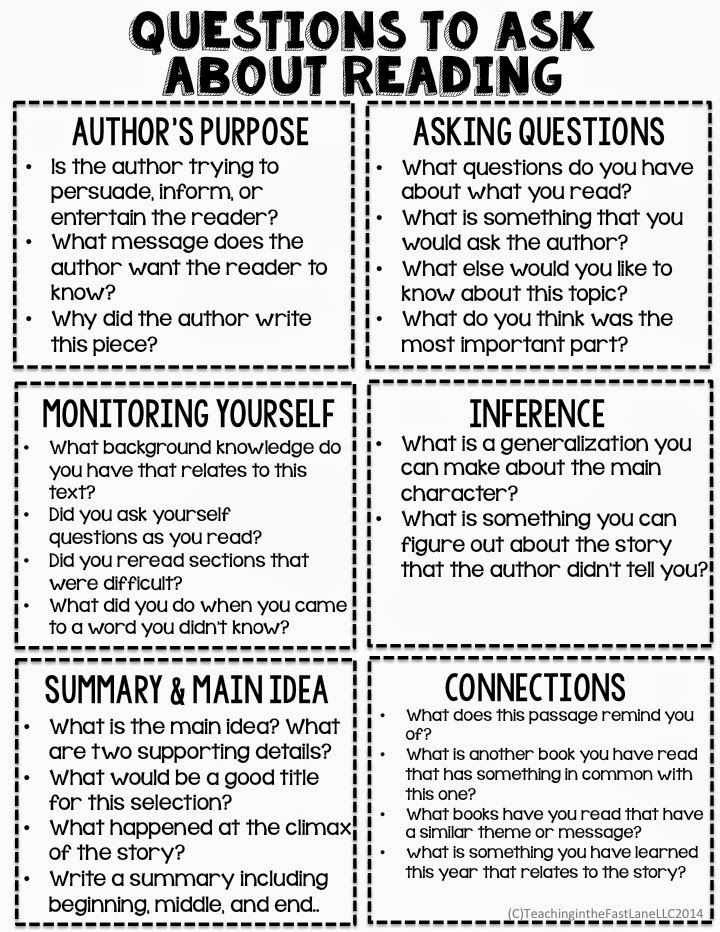 But having an arsenal of effective reading strategies is also incredibly helpful.
But having an arsenal of effective reading strategies is also incredibly helpful.
Now, don’t get me wrong…I don’t think there’s one magic solution or perfect formula for teaching reading. All teachers and students are different and find success with different programs or techniques. After all, there’s so many factors to consider when teaching and learning reading – phonics, fluency, comprehension – the list goes on and on.
And if you teach reading, you already know all of this. And you probably already have a pretty solid arsenal of strategies in your back pocket. But in an effort to collectively boost literacy for all of our little learners, I’d like to share with you a few reading strategies that I’ve found useful in my own classroom!
1. Focus on Fluency and Phonics SimultaneouslyPhonics and fluency truly go hand in hand – you can’t really have one without the other.
So, why not teach them together?
Merging subjects in school and teaching them simultaneously is pretty trendy right now in the world of education.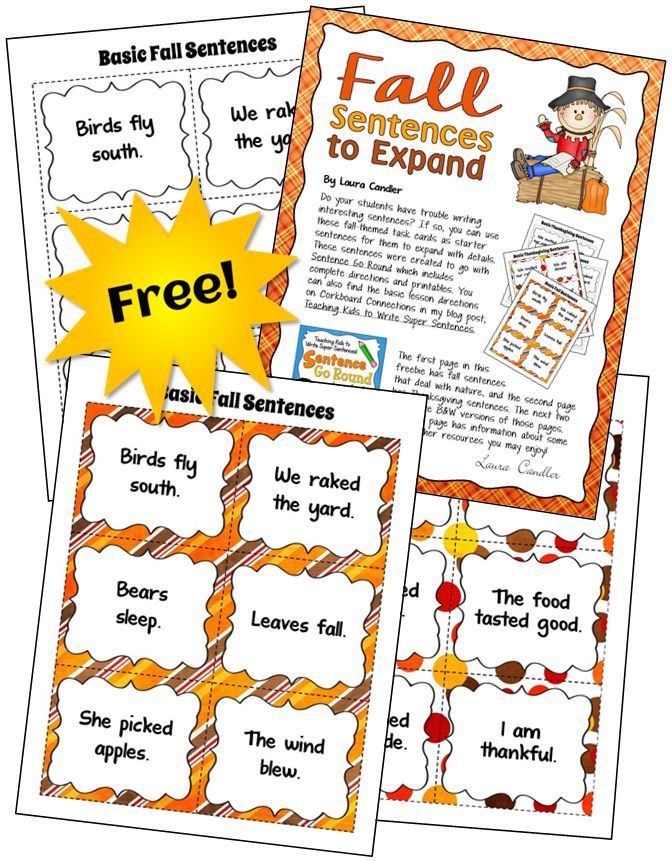 And while phonics and fluency pretty closely aligned, you can easily dip your toe in this trend by teaching them at the same time.
And while phonics and fluency pretty closely aligned, you can easily dip your toe in this trend by teaching them at the same time.
Fluency can be defined as being able to decode text and read with accuracy, speed, and proper expression. Basically, it’s the ability to easily read through a text without stumbling over words or sounding choppy and awkward.
It’s pretty essential for kids to become fluent readers in order to focus on comprehension. When they’re struggling to pronounce or decode, words, they can’t give the necessary attention to understanding the text.
Phonics is often thought of as a precursor to fluency. It deals with beginning readers understanding the correspondence between letters and sounds. Fluent readers often rely on their knowledge of letter-sound relationships to decode words.
Without phonics, it’s pretty tough to become a fluent reader. By teaching phonics while working on fluency, your students have the opportunity to grow exponentially as readers.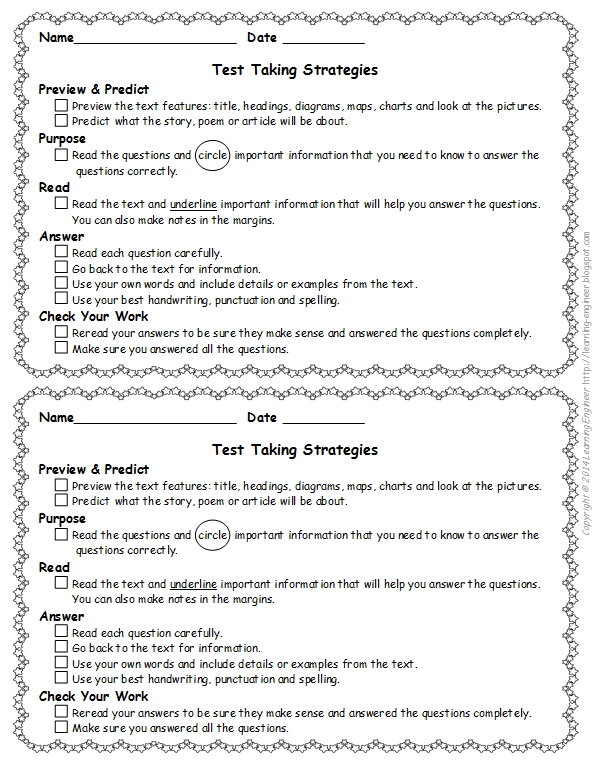
There are a ton of products out there that can help you combine these two essential reading skills into your lessons but one of my favorites are these Reading Comprehension Passages.
If your students are ready for more, we also offer our comprehensive reading passages for the year!
[shop_this_post id=”11151″]
Multitasking is a skill that all teachers are masters at! Why not use your multitasking skills in your reading instruction by simultaneously teaching phonics and fluency?!
2. Explicitly Teach and Display Reading StrategiesWe all know that amazing feeling that comes with creating the perfectly decorated classroom. Everything is in its place and perfectly organized – until the kids get there, of course.
But when it comes to room décor, it shouldn’t just be pretty – it should be meaningful. You can make your classroom décor a powerful part of your reading curriculum by displaying strategies around the room.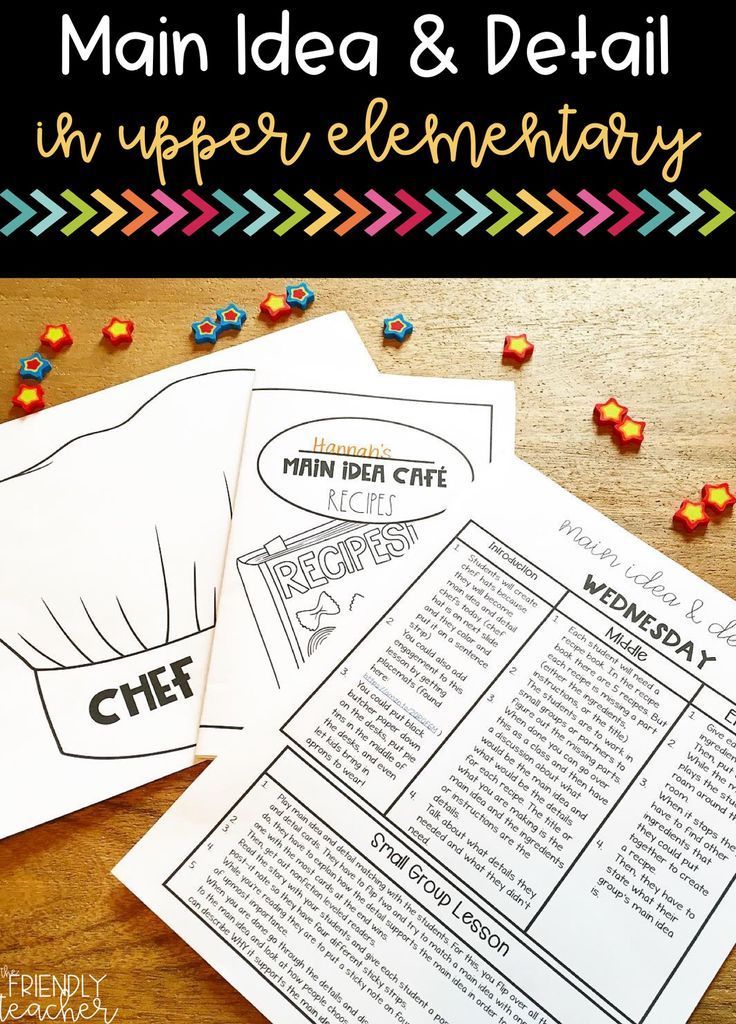
Displaying and explicitly teaching strategies that your students can use while reading. By keeping useful strategies displayed, you allow your students an element of independence. They can take control of their own reading and help themselves get through tough words or pronunciation issues!
Plus, depending on what strategy posters you decide to use, you can add to the adorable-ness of your room! These Reading Strategy Posters are so useful to both teachers and kids! They offer your students purposeful and specific strategies with beautifully illustrated designs!
You can even purchase the bundle and give each student their own set of strategy cards or keep sets in your reading corner for shared use!
3. Graphic OrganizersWhen it comes to reading comprehension, graphic organizers are an incredibly useful reading strategy and tool to support this vital aspect of becoming proficient readers.
The students in your classroom are undoubtedly a diverse bunch with each of them learning and absorbing information in different ways.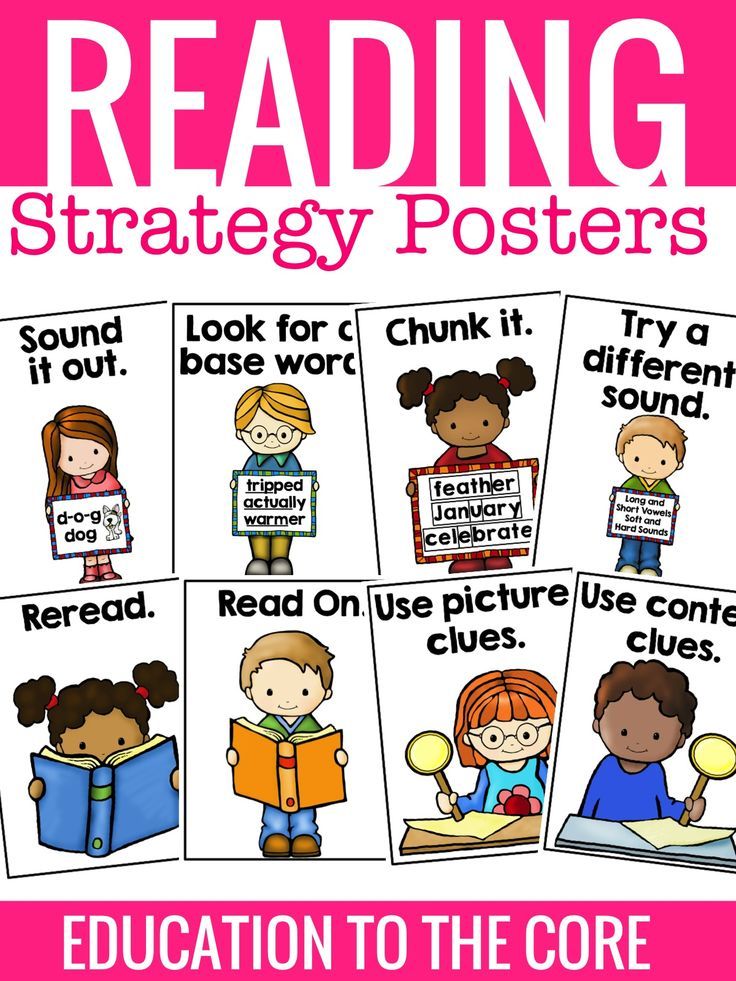 Using graphic organizers allows you to address a variety of learning modalities at once during reading instruction.
Using graphic organizers allows you to address a variety of learning modalities at once during reading instruction.
Graphic organizers let students process information both visually and spatially which encourages them to internalize the material. The very nature of graphic organizers enables students to quite literally see the connections in what they are reading.
There are a slew of graphic organizer products out there or you can even have your students create their own! Here are some of examples of how you can pair graphic organizers to any unit you teach! Find more close reading units with graphic organizers here!
4.
Employ the 3-2-1 Reading StrategyA fun technique to use when teaching reading is something called the 3-2-1 strategy. This can be very helpful in ensuring and monitoring student engagement.
If students are not fully engaged in their endeavor to learn how to read, their progress will occur at a much slower rate.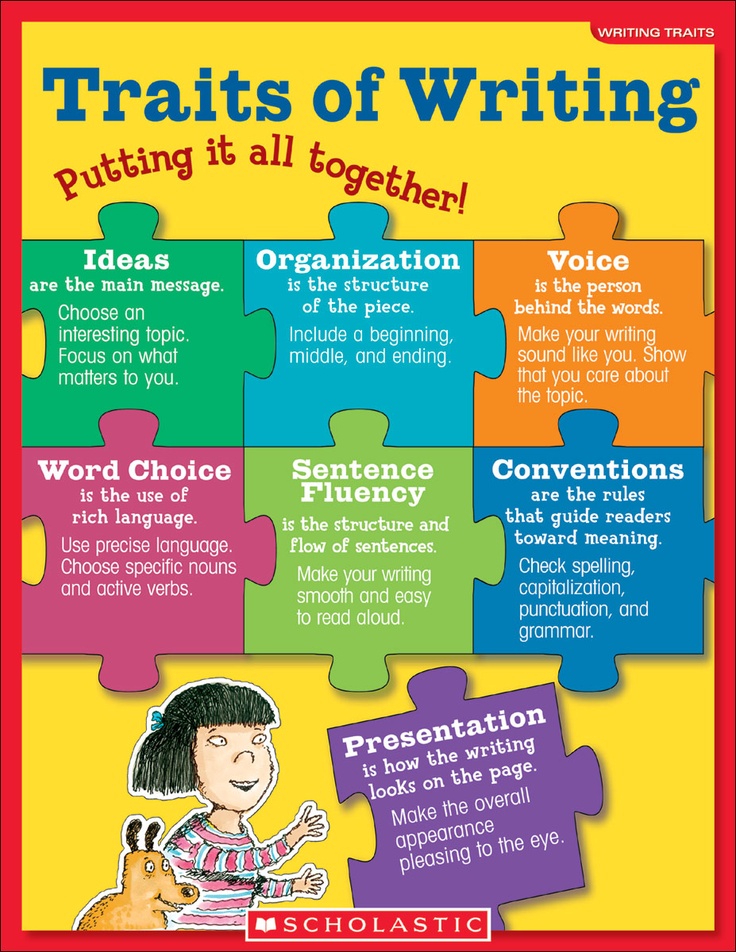
After students complete a passage, ask them to write down 3 things that they learned, 2 things that are interesting, and 1 question that they have.
By using this simple strategy, you not only boost their engagement but you allow them to purposefully improve their reading comprehension.
5.
Decoding: Focus on Problem SoundsDecoding is a common skill that students employ when learning to read. I like to think of it like a ‘word attack’ technique that helps my students translate printed words to speech.
While it is important to focus on decoding all words – from simple to challenging – placing a pointed focus on decoding problem sounds can do wonders for improving your student’s reading skills.
But focusing on problem sounds while decoding can be a difficult and tedious process. Finding ways to make this process fun can help keep your students engaged and making steady progress.
Using manipulatives to teach letter-sound relationships is a great technique.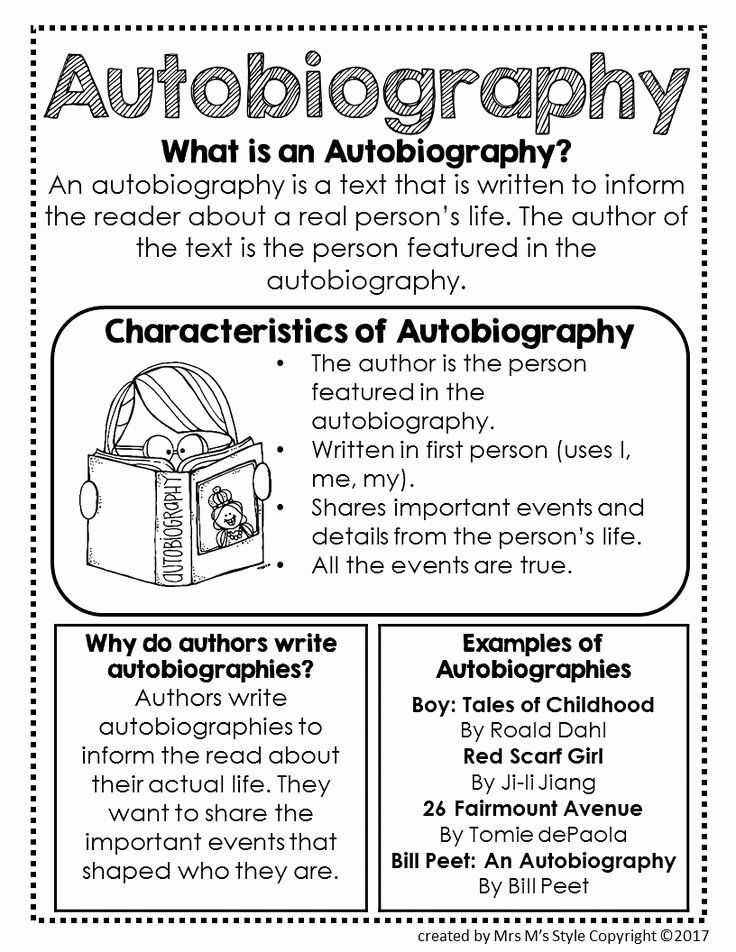 You can try counters, magnetic letters, or sound boxes.
You can try counters, magnetic letters, or sound boxes.
Another fun idea is to ask students to identify when you make ‘on-purpose’ mistakes. Kids love catching errors that teachers make and using this technique when decoding problem sounds is very effective. When they identify an error, have them correct it as well!
There are a slew of products out there that can help make decoding problem sounds more fun for your students. One of my favorites is the Crowns Bundle. This bundle is a fun and purposeful way to introduce each alphabet sound, blend, trigraph, or diphthong.
6.
Use MetacognitionMetacognition can be defined as “thinking about thinking”. What exactly does that mean when it comes to your reading instruction?
Basically, by using metacognition, you help get your students in the habit of thinking about their reading before, during, and after a text.
Before reading a text, you might ask your students to discuss their purpose for reading and preview the text.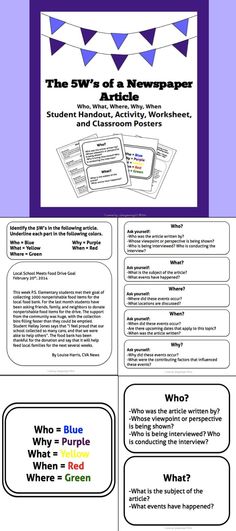
During reading, you can guide students to continually monitor their understanding, adjust the speed they are reading to ensure that it aligns with the difficulty, or address any possible comprehension issues that they come across.
After reading, you can use various methods such as finger signs, sticky note questions, or round robin activities to check your students understanding of what they read.
When first using metacognition, you will likely have to offer quite a bit of support to your students and ‘train’ them to get in the habit of metacognition strategies. The goal is to scaffold until they can get into the habit of thinking about their reading on their own.
7. Make It PersonalBy making text to life connections and activating prior knowledge, students become invested in their reading. This can be a powerful tool to keep them engaged and motivated when it comes to working on their reading skills.
Furthermore, connecting what your students are reading to their lives in addition to activating prior knowledge often helps students retain more of what they read.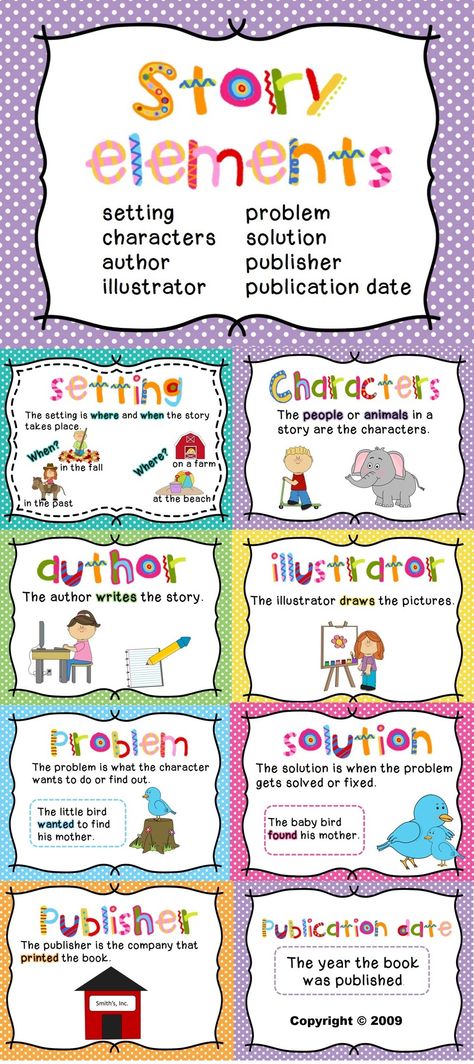
Asking students questions like:
- Is this subject familiar? What do you know about this topic?
- Do these characters remind you of anyone from your own life?
- What event from your life does this text remind you of?
- How do the ideas in the text relate to your own life or experiences?
These are just a few of the many possible questions that you can ask to effectively activate prior knowledge and help students personally connect to a text. By doing this you keep your little readers actively engaged and involved in their reading. When students care about and connect with their reading, they tend to soar academically.
8. Word WallsWord Walls
A word wall is often seen as simply a classroom decoration or fancy bulletin board, but this couldn’t be further from the truth. Maintaining a word wall is a highly effective strategy for promoting literacy in your classroom.
Word walls are powerful tools to help students work on their spelling, vocabulary, and reading skills.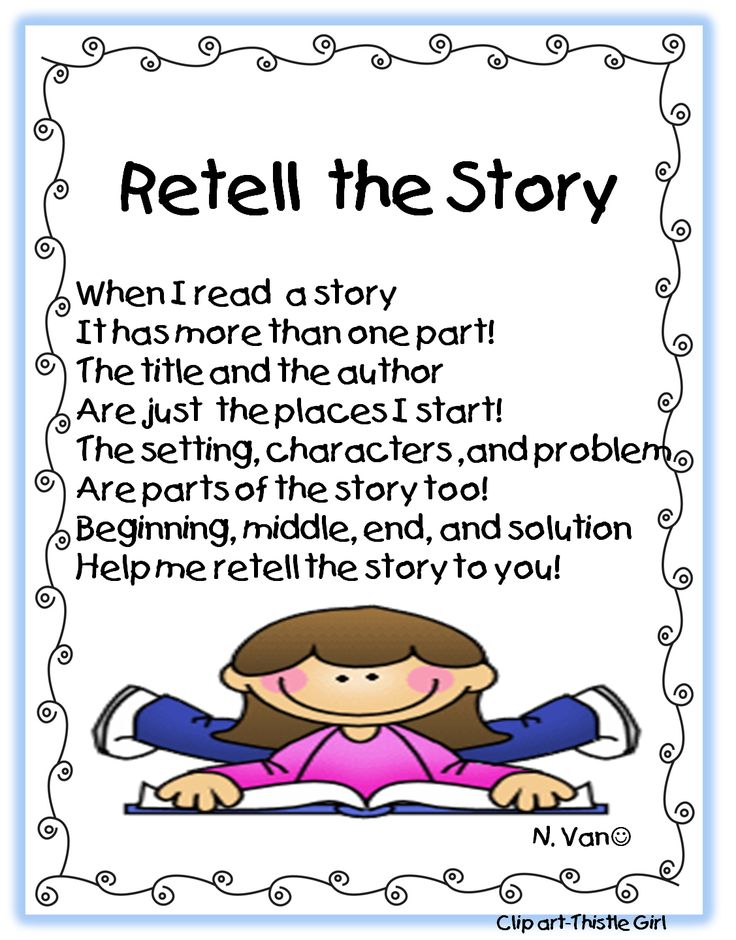 They help promote a literacy-focused environment that’s rich in printed text. Students can refer to the word wall for
They help promote a literacy-focused environment that’s rich in printed text. Students can refer to the word wall for
When creating your word wall, don’t feel as if it needs to be a static resource! They can be utilized daily by incorporating various activities and word wall lessons into your curriculum.
Word walls should be referred to on a daily basis. A few fun activities might include:
- Hot Seat: A student in the “hot seat” asks the other students questions to try and figure out the secret word.
- OOPS: Pass around a box filled with word wall cards and each student draws a card, shows the class, and reads the word. If they read it correctly, they keep it!
- Vocab Toss: Split the class into teams. Say a synonym or antonym of a word wall word, say a sentence missing the word wall word, or provide a definition of a word wall word. Student must guess the correct word. If correct, they get to make a basket using paper and the trashcan to double their score.
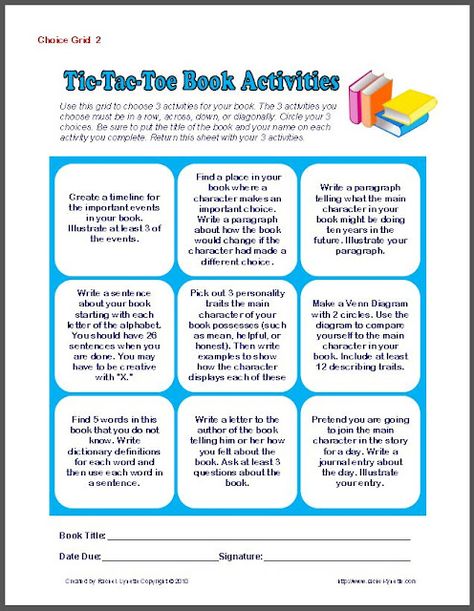
These are just a few of the countless ways that you can integrate word walls into your lessons!! Remember, word walls can be a beautiful addition to classroom decoration, but they can also be a useful strategy to employ in your reading curriculum.
9. More Than Just BooksKids often associate reading with boring school textbooks or assigned chapter books that are of no interest to them. You can effectively change this association by allowing students to read the world around them!
When you open up your student’s eyes to new and exciting reading material, you help them see the world in a whole new literacy-rich way.
Allow your students time to explore nontraditional reading material that interests them. This will not only motivate them and keep them excited about reading, but it will offer reading challenges that typical texts may not.
Suggest material like newspapers, magazines, recipes, comic-books, blogs, or song lyrics! Keep it fresh and fun and your students will be dying to read more!
10.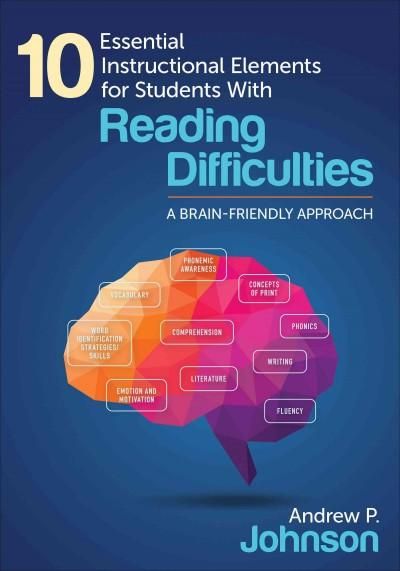 Voice and Choice
Voice and ChoiceKids are opinionated – about EVERYTHING! What they read is no different. The voice and choice strategy is an effective way to get kids wanting to read.
If you were forced to read a book about a topic that was of no interest to you, would you be excited? Would you put forth your best effort?
Probably not.
But if you were allowed to choose what book you wanted to read, chances are that you would be much more motivated and engaged.
Start by having a conversation with your students about what their interests are or what they would like to know more about.
Discuss your students hobbies, fears, curiosities.
Based on these conversations, you can select a variety of different content for your student’s to choose from that will help them stay excited about learning to read.
11. Integrate TechnologyWe all know that kids tend to excel at the things that they are interested in or care about.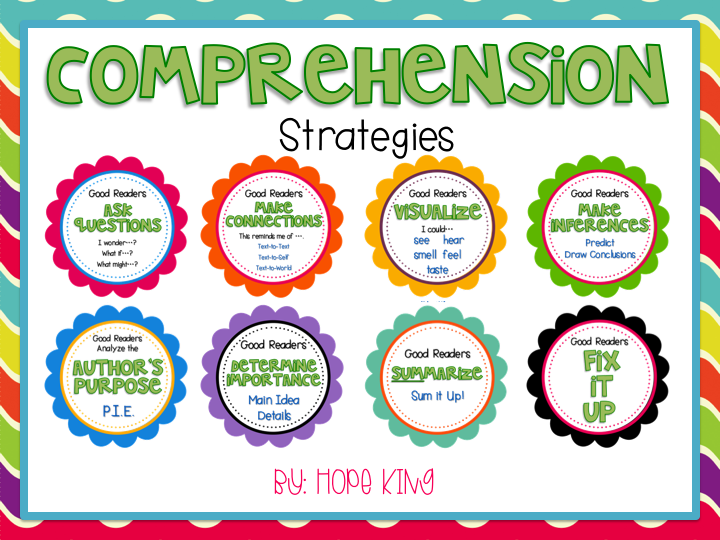 And I haven’t come across a child today that doesn’t love all things technology.
And I haven’t come across a child today that doesn’t love all things technology.
Technology is the perfect way to not only get your kids excited about reading, but offer them the opportunity to work on a variety of reading skills. Aside from the obvious use of reading on a kindle or other e-reader device, there are countless apps and programs out there that help build fluency and comprehension in engaging ways.
Try allowing your students to play around with one of these apps or websites:
- ABC Spy App: actively helps kids learn letters and pronunciations
- Bookster App: storytelling app that reads to kids and allows them to record their voice to the story as well
- Seuss’s ABC App: kids have the option to read the book or have it read to them; words are highlighted for easy follow along
- MeeGenius App: audio playback; personalization where child can substitute their name in the book; toddler to young teen
- readtomelv.com: celebrities reading books aloud; Common Core aligned activities and discussion questions accompany each book
- Pbskids.
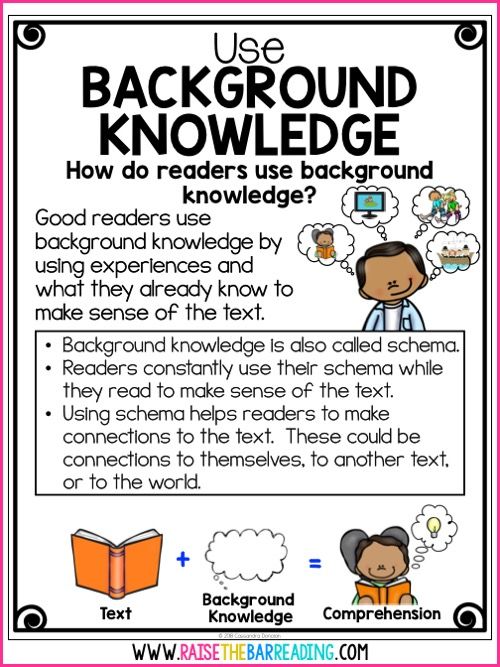 org has a wide variety of different reading based games with characters that kids know and love.
org has a wide variety of different reading based games with characters that kids know and love. - roythezebra.com offers different interactive reading games that focus on rhyming, word stops, capital letters, and much more.
- suessville.com brings Dr. Suess books to life with fun and interactive games that kids can play after reading Dr. Suess books online.
- randomhousekids.com offers two reading games that focus on matching and drawing to bring a creative element to reading.
- http://www.thepixiepit.co.uk/games_menu.htm for slightly older kids, this website offers TONS of different word and letter games that help with a multitude of reading related skills.
The innate understanding that kids today have with technology makes it an amazing strategy for boosting learning and engagement during your reading instruction.
12. Write to ReadIt’s common knowledge that great readers often produce great writers, and vice versa.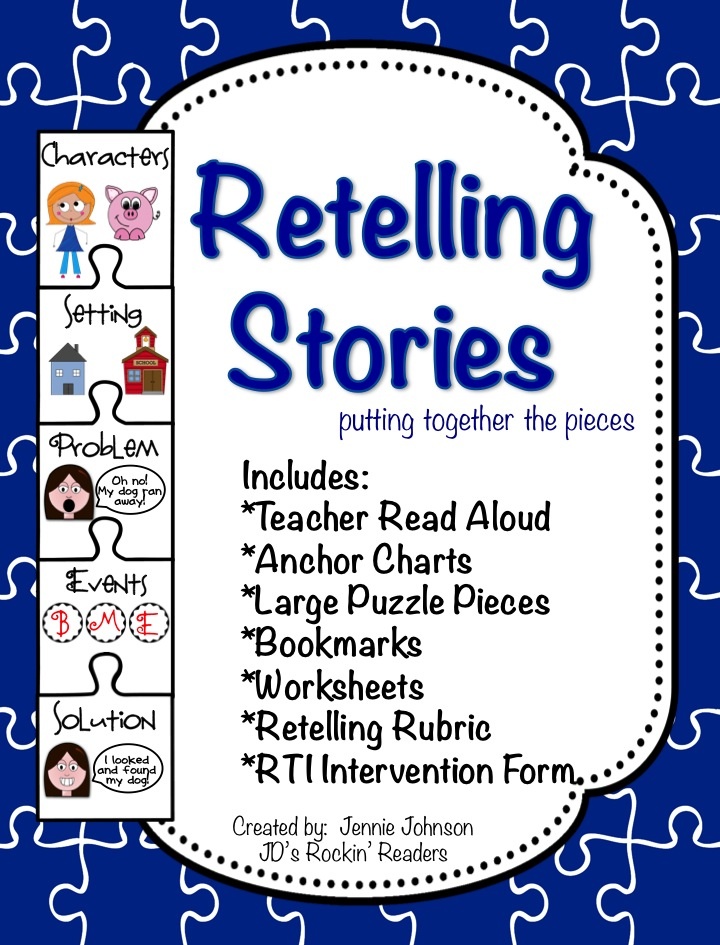 Reading and writing go hand in hand, both skills work together to improve each other.
Reading and writing go hand in hand, both skills work together to improve each other.
When students are engaged in writing, they end up working on their reading skills at the same time! Using writing as a strategy to improve reading skills is a sneaky way to disguise practicing things like fluency, comprehension, and phonics.
One fun way to use writing as a reading strategy is by asking students to become authors! They can write a mini-book, picture book, or even try their hand at a chapter book or comic-book.
In order to write a book, students will need to rely on their knowledge of reading conventions such as creating a cover, illustrations, text, chapter titles, and back cover description.
Plus, when kids are reviewing their stories, they unknowingly edit and proofread their work. All of these skills help to improve reading skills in your classroom!
13. Make the Reading Strategy A Game!Everyone loves games! They offer healthy competition, the possibility to win, and the opportunity to be engaged in something fun! Adding games to your reading instruction is a great strategy to improve literacy skills.
There are a ton of simple ways that you can turn reading into game…
…or you can use reading inspired games to help increase literacy skills!
For creative students, you might let them brainstorm some ideas for reading games in order to give them some control and a chance to flex their creative muscles! You might be surprised with what they come up with!
If you want a bit more control over the types of reading game you play, try suggesting some of the following:
- Each of you can take turns guessing what is going to happen next in the story based on the pictures – then discuss who was more accurate.
- Implement a word hunt where your reader has to shout out a pre-determined ‘buzz’ word (any adjectives or verbs or main character’s name). If shouting is outside your zone, perhaps they have to touch their nose or clap their hands when they come across a ‘buzz’ word.
- Try finding little words inside bigger words or asking your child to replace one word on each page with a synonym or antonym.
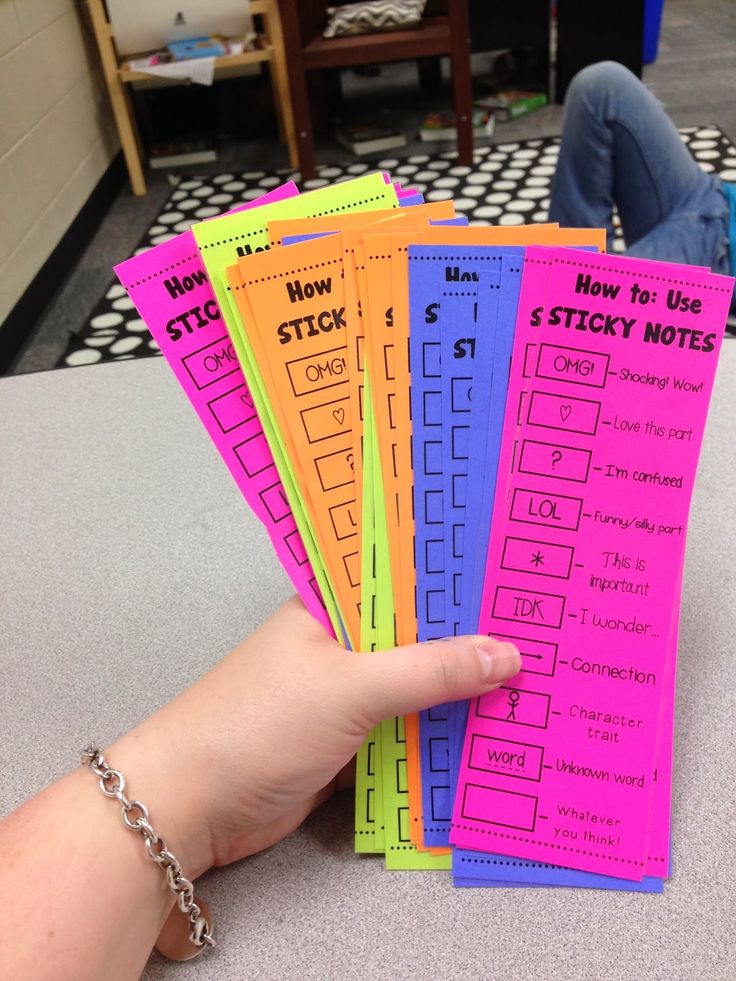
- Ask your reader to read a page in the text to themselves. Then, let them act out what happened and you have to guess, or vice versa.
As teachers, it’s second nature to want to correct your students when they make a mistake. This urge to correct or jump in and help a struggling student simply comes love and wanting to help them learn and improve.
I’ve always struggled with this particular teaching strategy. I actually started wearing a rubber-band around my wrist as a painful reminder to not over-correct. When I get the urge to constantly correct or too-quickly help a struggling student, I snap the band to remind myself to pause and shut my big mouth!
Even though most over-correction truly does come from a place of kindness and an urge to help, these corrections can often feel like hurtful criticisms to young readers.
As teachers, it can be difficult to balance when it’s appropriate to correct a student’s mispronunciation or incorrect inflection while reading.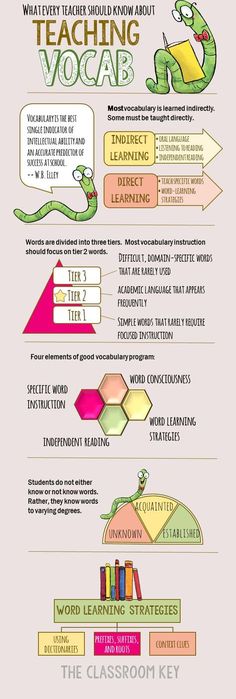 It helps to always remind yourself that the goal is progress, not perfection. And part of progress is building confidence.
It helps to always remind yourself that the goal is progress, not perfection. And part of progress is building confidence.
A few things to keep in mind and phrases to avoid when correcting your readers:
- As a general rule when a student is reading through a text for the first time, do not interrupt them. Ever. Let them get through it, mistakes and all. Before their second time reading through the text, discuss any unknown words or mistakes made. Then you can model the correct pronunciation for troublesome words or mistakes.
- Avoid saying, “Come on, hurry up!” or “Whoa, slow down!” Fluency can be a challenging skill to master and one that will take time and practice. Now, there’s no rule about saying “C’mon, hurry up”, in your head after hearing a student stumble through a text for the tenth time!
- Try not to say, “Stop. Reread that line correctly.” If the mistake did not interfere with the meaning, let it go and review it later rather than interrupting.
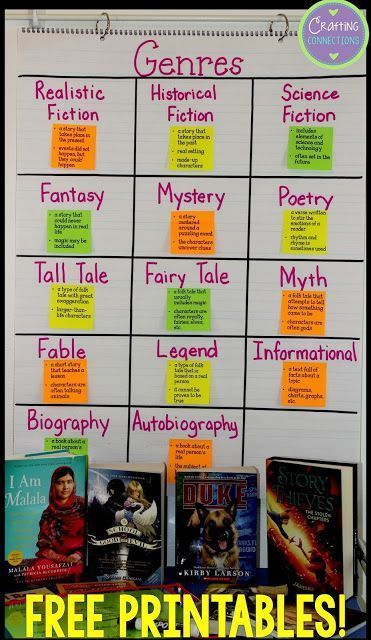 This will help them focus on fluency and build confidence.
This will help them focus on fluency and build confidence.
- Do. Not. Laugh. Never laugh. This is the most damaging thing that you can do when teaching reading. Now, if your student laughs at their mistake, it is okay to laugh together – but NEVER laugh at your reader. This seems like an obvious bit of advice…but you would be surprised how hysterical some word mispronunciations can be! Especially if the student unknowingly mispronounces something as an ‘adult word’. Regardless – don’t laugh!
The not over-correcting strategy is especially important with new readers. In the early stages of learning to read, building confidence is often the main objective. So, try to keep the corrections and comments to a minimum. Once you have a confident reader, you can focus more on improving accuracy, fluency, and pronunciation.
15. Offer Proper PRAISE!
Of all the reading strategies that have been discussed, praising your students is by far the most critical one to utilize when teaching reading.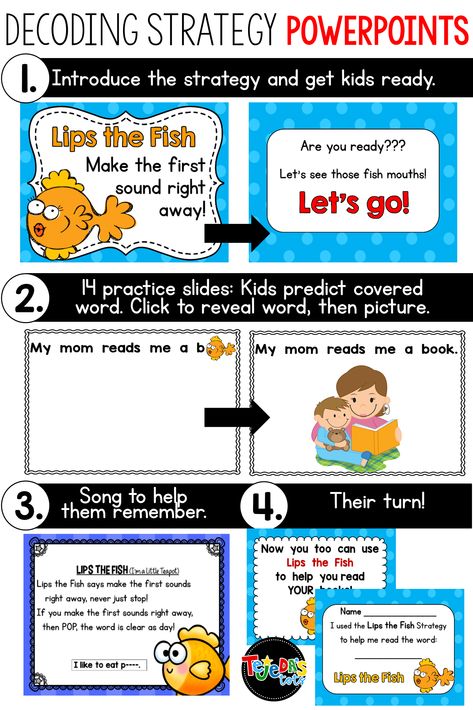
You may think that this strategy is pretty self-explanatory…but all praise is actually not created equal. There’s a specific way in which you should deliver praise to your budding readers.
First and foremost, praise your student’s successes, no matter how big or small – and praise them often. It is important to offer praise for your student’s efforts, their dedication, and even their struggles.
It is inherently in a child’s nature to want to make their teachers proud. When they feel as if they have accomplished this, it has the ability to seriously motivate and encourage them to keep reading.
We all want to feel appreciated, especially when it comes to our jobs. For kids, learning to read is essentially part of their ‘job’ as students. When your students feel as if they’re failing at their ‘job’, or that their efforts are not being acknowledged, there’s a good chance that their intrinsic interest or motivation in reading will plummet.
When using praise as a strategy for teaching reading, it’s vital that you understand the most effective way to offer praise to your students.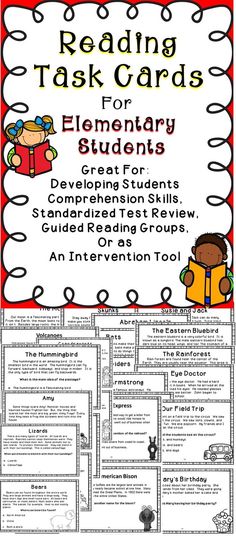
A commonly used sentiment may sound something like, “You read that perfectly, you are so smart!” And while this sounds harmless, you’re actually inadvertently planting a seed in their mind telling them they’re only smart if they get something right.
The drawback to this type of statement is that it can end up discouraging them when they make mistakes.
Instead, offer your students praise for their efforts, perseverance, or progress made rather than their simply praising their perfection or intelligence. Praising specific efforts or pointing out accomplishments allows them to feel proud of what they have done, while still encouraging them to keep trying.
Practice celebrating the efforts or the strategies that your students employ while reading. This will teach them to utilize these skills again in the future.
Some things to keep in mind:
- Praise specific efforts: “You worked really hard using your context clues to figure out that word.”
- Encourage your reader regardless of what level they’re at.
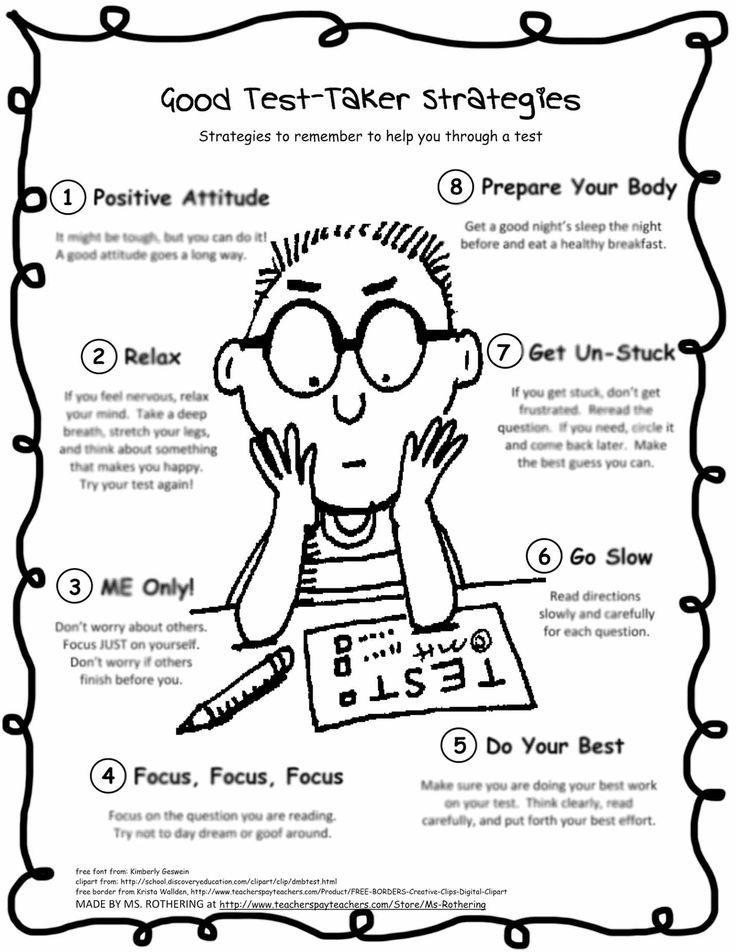 If your child is reading two grade levels below where they should be, praise their perseverance and hard work without mentioning their reading level.
If your child is reading two grade levels below where they should be, praise their perseverance and hard work without mentioning their reading level. - Be one-hundred percent sincere! Kids are EXTREMELY intuitive and they will sense false or empty praise when it’s offered, which will only discount their hard work.
Praise is one of the simplest strategies that you can utilize when teaching reading! If done correctly, it can seriously impact your student’s reading success!
Guest post by Margot Carmichael from Carmichael’s Class
“Teaching 4th grade for four years has helped shape me as a teacher who is passionate about creating a classroom that engages and inspires my students, integrates technology-driven learning, offers real-world experiences, and breeds creativity. I have taught highly diverse classes with high populations of ESL learners, Special Ed learners, and behavior challenges–granting me a deep understanding on the importance of personalizing learning for each and every student.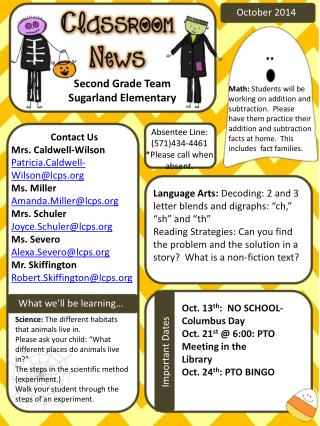 As a teacher, I am constantly learning and evolving, but the one constant is always putting my students first!”
As a teacher, I am constantly learning and evolving, but the one constant is always putting my students first!”
Comments
comments
Semantic reading strategies. Report | Methodical development on reading (grades 1, 2, 3, 4):
"Semantic reading strategies"
Compiled by: Sosnina O.A.
“These kind people do not even suspect what
labors and time it takes to learn to read.
I myself have spent 80 years on this and I can’t say everything,
to fully achieve the goal"
J. Goethe
Today it is not enough to teach a little person to read. To teach him to read meaningfully, productively, to perceive the text, tracing cause-and-effect relationships - this is an important task for the teacher.
The new generation of educational standards force us to take a fresh look at the very definition of the meaning of the word "reading". Reading should be considered as a quality of a person, which should be improved throughout his life in different situations of activity and communication.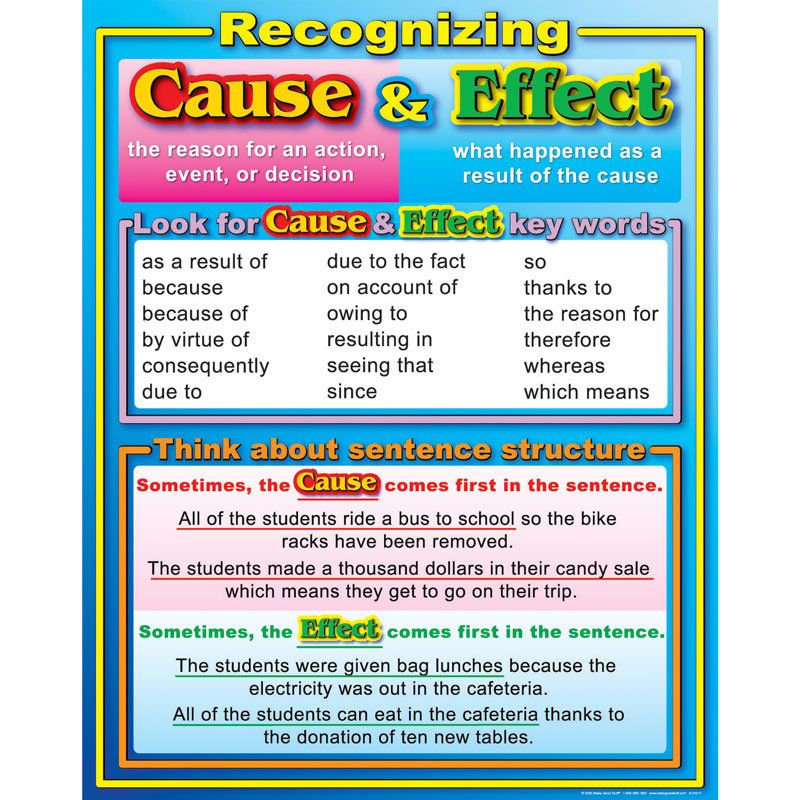 Therefore, the technical side should be considered as a subordinate semantic.
Therefore, the technical side should be considered as a subordinate semantic.
FSES LLC is included in the meta-subject results of mastering the main educational program of basic general education as a mandatory component "mastering the skills of semantic reading of texts of various styles and genres." The components of semantic reading are included in the structure of all universal educational activities:
personal UUD - includes motivation for reading, motives for learning, attitude towards oneself and towards school;
into regulatory UUD - the student's acceptance of a learning task, arbitrary regulation of activity;
in cognitive UUD - logical and abstract thinking, working memory, creative imagination, concentration of attention, vocabulary volume;
in communicative UUD - the ability to organize and implement cooperation and cooperation with a teacher and peers, adequately convey information, display the subject content and conditions of activity in speech.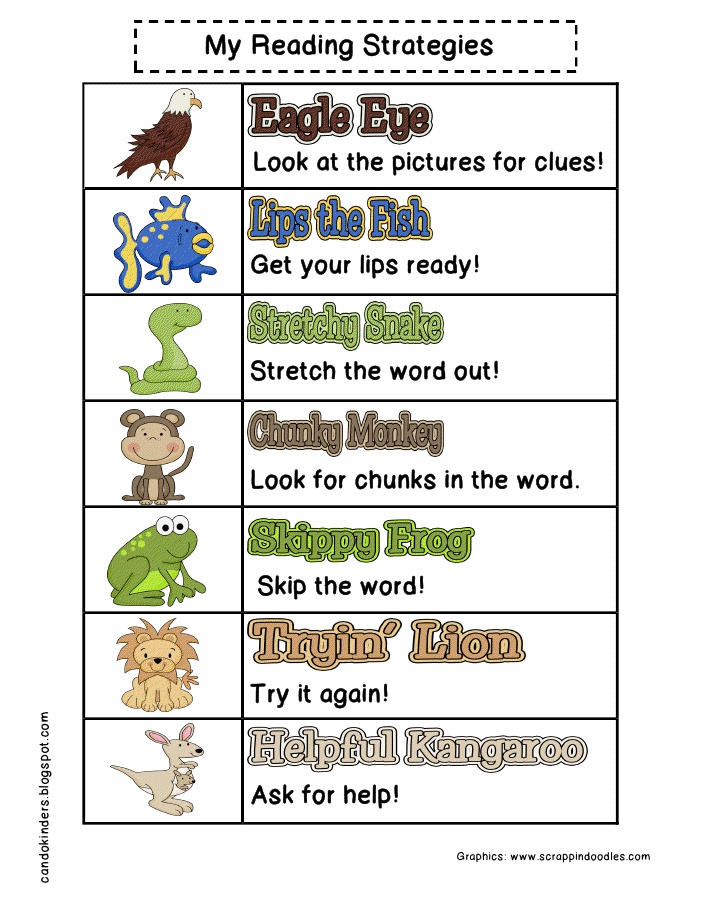
"Semantic reading" is such a quality of reading, in which an understanding of the informational, semantic and ideological aspects of the work is achieved. The purpose of semantic reading is to understand the content of the text as accurately and fully as possible, to catch all the details and practically comprehend the extracted information. When a child masters semantic reading, then he develops oral speech and, as the next important stage of development, written speech.
To work with the text at each stage, the reader chooses his own strategies. Learning strategies are a set of actions that a learner takes to facilitate learning, make it more efficient, effective, faster, more enjoyable, aim and bring learning activities closer to their own goals
resources, transfers the strategy to other situations, makes it universal. The number of strategies and the frequency of their use are individual.
Strategy No. 1. Directed reading
Purpose: to form the ability to purposefully read the educational text.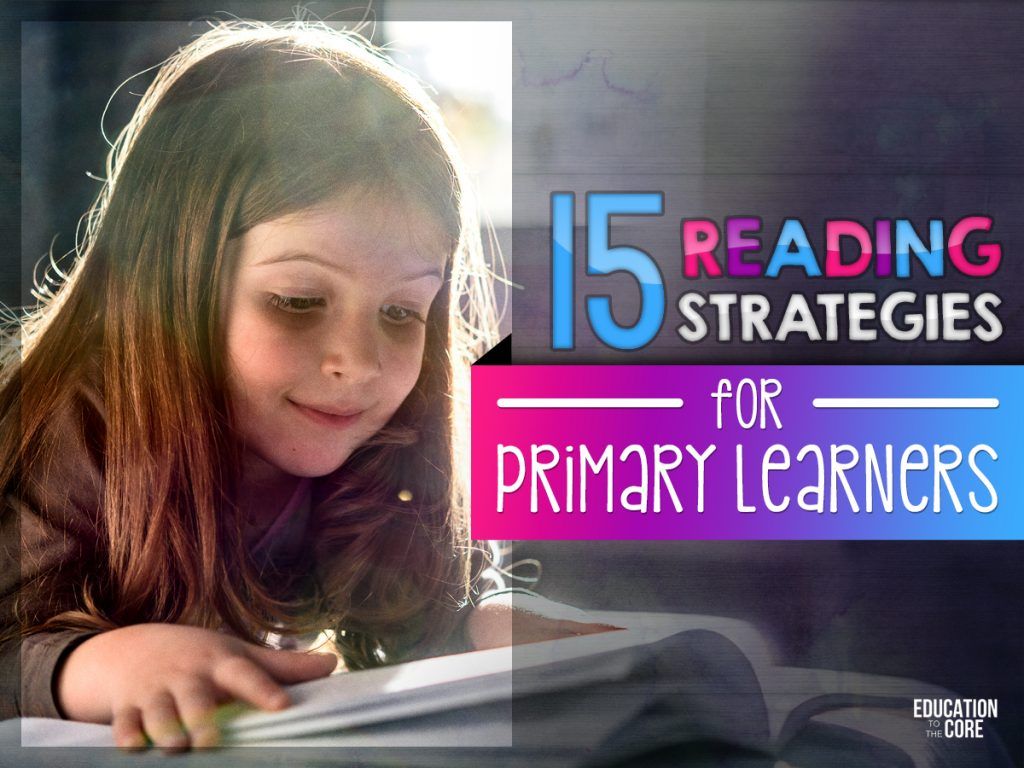 Ask questions and lead group discussions.
Ask questions and lead group discussions.
- Update.
"Associative bush" technique: the teacher writes a keyword or title of the text, the students express their associations one by one, the teacher writes down. The use of this technique allows you to update knowledge, motivate subsequent activities, activate the cognitive activity of students, set them up for work.
2. The students silently read a short text or part of the text, stopping at the indicated places.
3. The teacher asks a problematic question on what has been read.
4. The answers of several students are discussed in class.
5. The students make an assumption about the further development of the event.
Strategy #2. Reading in pairs - generalization in pairs
Purpose: to form the ability to highlight the main thing, summarize what has been read in the form of a thesis, ask problematic questions.
1. The students silently read the text or part of the text chosen by the teacher.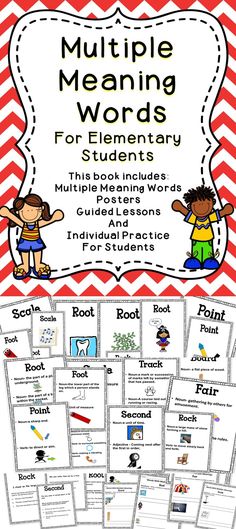
2. The teacher puts the students in pairs and gives clear instructions. Each student alternately performs two roles: speaker - reads and summarizes the content in the form of one thesis; the respondent listens to the speaker and asks him two substantive questions. Next comes the role reversal.
3. The teacher invites all students to the discussion.
Bloom's Chamomile
Chamomile consists of six petals, each of which contains a certain type of questions. The value of this technique is that it teaches children to listen and hear, develops speech, enables communication, activates mental activity, cognitive interest, encourages children to act, and forms the skill of working with text. Bloom's chamomile can be used in any subject and at all levels: both in primary and senior levels.
The chamomile is made up of six petals, each containing a specific type of question. Thus, six petals - six questions:
1. Simple questions - questions, answering which, you need to name some facts, remember and reproduce certain information: "What?", "When?", "Where?", "How?".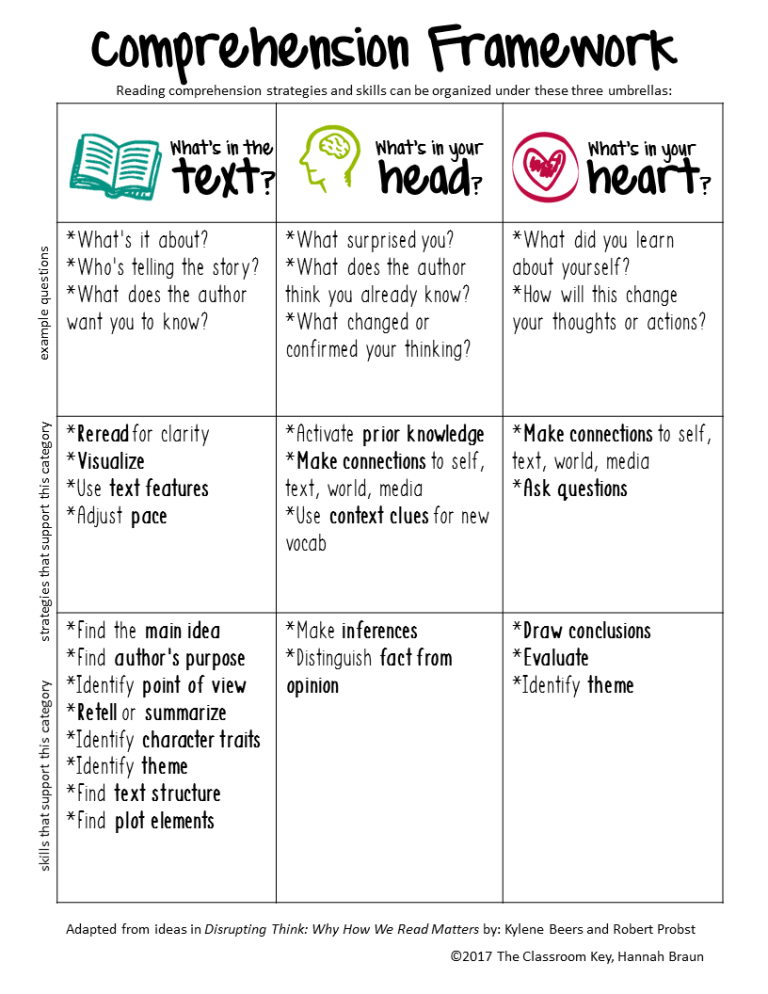 The question should begin with the word - name ...
The question should begin with the word - name ...
2. Clarifying questions. Such questions usually begin with the words: "So you say that ...?", "If I understand correctly, then ...?", "I may be wrong, but I think you said about ...?". The purpose of these questions is to provide the student with opportunities for feedback on what they have just said. Sometimes they are asked in order to obtain information that is not in the message, but is implied. The question should begin with the word - explain ...
3. Interpretive (explanatory) questions. Usually begin with the word "Why?" and aimed at establishing cause-and-effect relationships. Why do leaves on trees turn yellow in autumn? If the answer to this question is known, it "turns" from an interpretive question into a simple one. Therefore, this type of question "works" when there is an element of independence in the answer.
4. Creative questions. This type of question most often contains the particle "would", elements of convention, assumption, forecast: "What would change .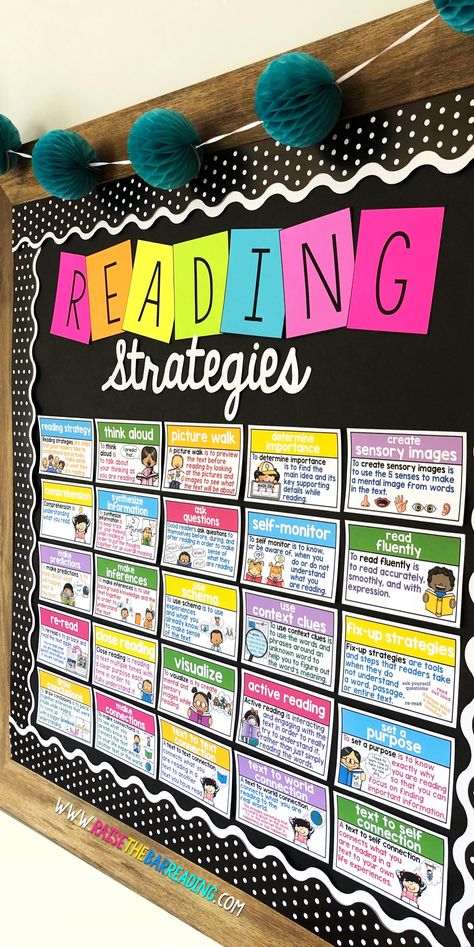 ..", "What will happen if ...?", "How do you think the plot will develop in the story after ...?". The question should begin with the word - think of ....
..", "What will happen if ...?", "How do you think the plot will develop in the story after ...?". The question should begin with the word - think of ....
5. Practical issues. This type of question is aimed at establishing the relationship between theory and practice: "How can you apply ...?", What can be done from ...?", "Where in ordinary life can you observe ...?", "How would you acted in the place of the hero of the story?". The question should begin with the word - suggest ....
6. Evaluation questions. These questions are aimed at clarifying the criteria for evaluating certain events, phenomena, facts. "Why is something good, but something is it bad?", "How does one lesson differ from another?", "How do you feel about the action of the protagonist?", etc. The question should start with the word - share ...
The questions are formulated by the students themselves. This option requires some preparation from children, since it is easy to come up with reproductive questions, but task questions require a certain skill.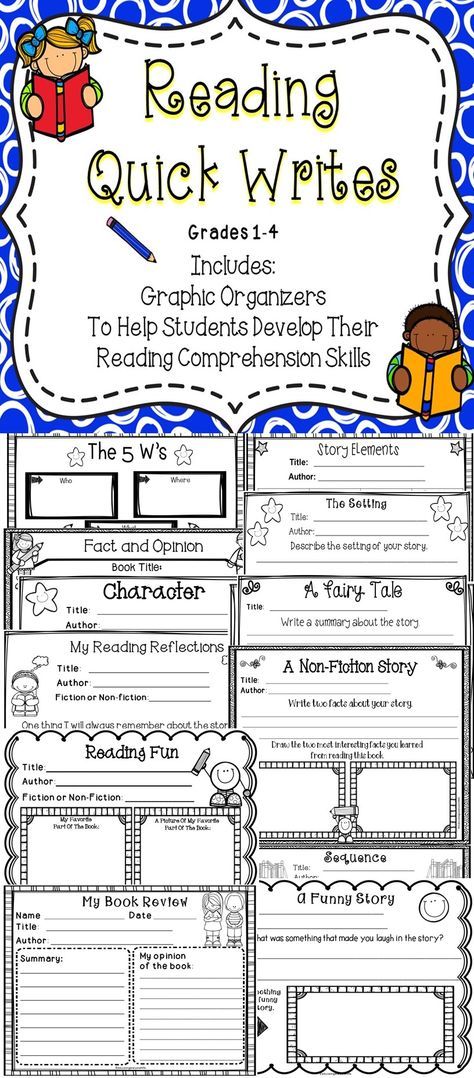
The Question Daisy is one of the effective techniques that can be used at different stages of the lesson. It helps to teach children to ask questions to the text on their own. Students like to formulate and write down questions to the work (at any stage of work), work can be done in pairs, groups and individually. Children are most interested in practical questions: “What would you do ...?”
“Chamomile” can be used at the “Challenge” stage, then students first ask questions, and then look for answers, comprehension, or at the “Reflection” stage to summarize the knowledge gained.
The use of the method "Daisy Bloom" allows you to implement a differentiated and student-oriented approach in the educational process. Bloom's taxonomy is one of the forms of work on the development of critical thinking.
Strategy No. 2. Reading in pairs - summarizing in pairs
Purpose: to form the ability to highlight the main thing, to summarize what has been read in the form of a thesis, to ask problematic questions.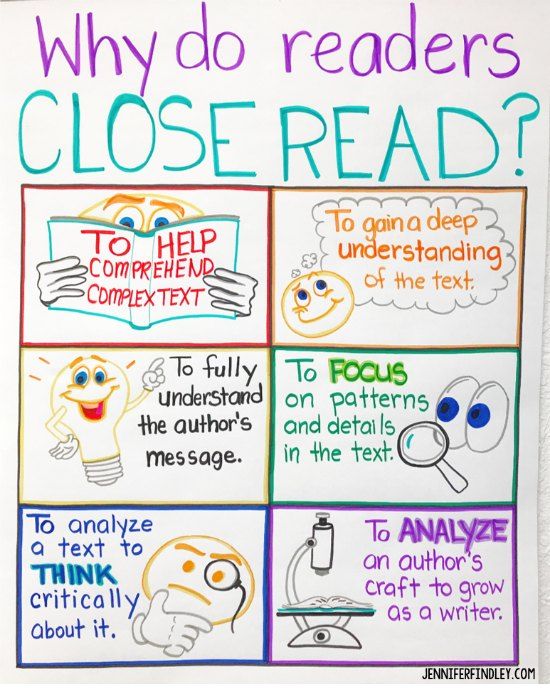
1. Pupils silently read the text chosen by the teacher or part of the text.
2. The teacher puts the students in pairs and gives clear instructions. Each student alternately performs two roles: speaker - reads and summarizes the content in the form of one thesis; the respondent listens to the speaker and asks him two substantive questions. Next comes the role reversal.
3. The teacher invites all students to the discussion.
Strategy No. 3. Reading and asking
Purpose: to develop the ability to work independently with printed information, formulate questions, work in pairs.
1. Students silently read the proposed text or part of the text chosen by the teacher.
2. The students work in pairs and discuss which key words should be highlighted in the reading. (Which words appear most often in the text? How many times? Which words are in bold? Why?
If you were to read the text aloud, how would you make it clear that this sentence is the main thing? We are talking about highlighting the phrase with your voice.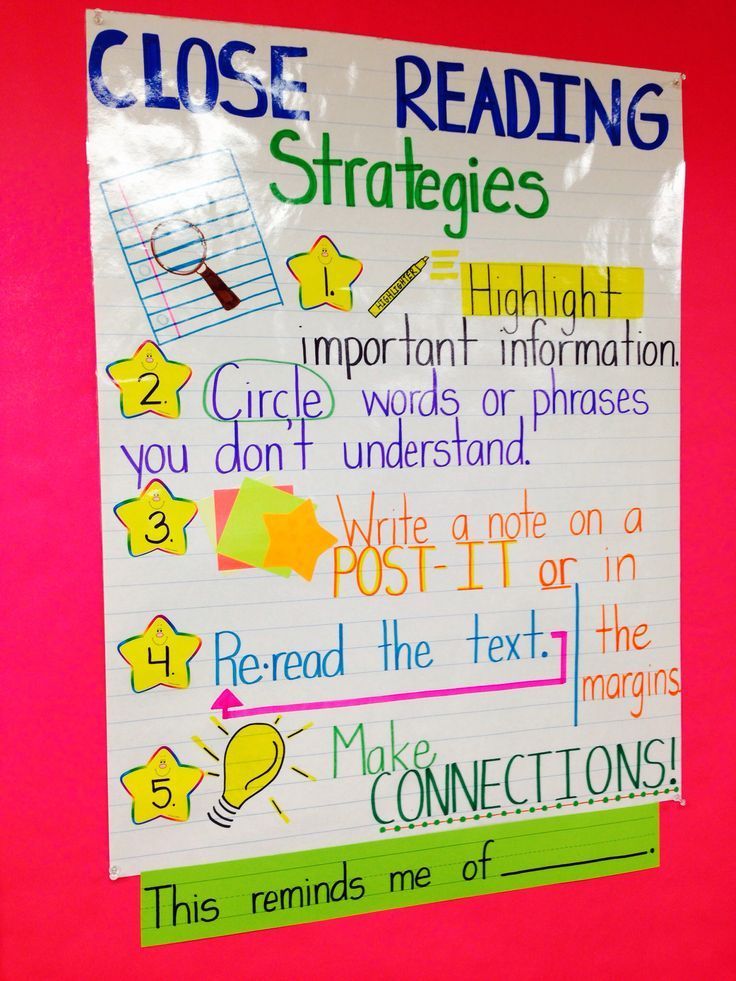 Here hides an unobtrusive but reliable memorization.)
Here hides an unobtrusive but reliable memorization.)
3. One of the students formulates a question using key words, the other answers it.
4. Discuss key words, questions and answers in class. Correction.
Strategy No. 4. Diary of double entries
Purpose: to develop the ability to ask questions while reading, critically evaluate information, compare what is read with one's own experience.
1. The teacher instructs the students to divide the notebook into two parts.
2. In the process of reading, students should write down on the left side the moments that struck, surprised, reminded of some facts, caused any associations; on the right - write a concise commentary: why this particular moment surprised you, what associations it caused, what thoughts it prompted.
Strategy No. 5. Reading with notes
Purpose: to develop the ability to read thoughtfully, evaluate information, formulate the author's thoughts in your own words.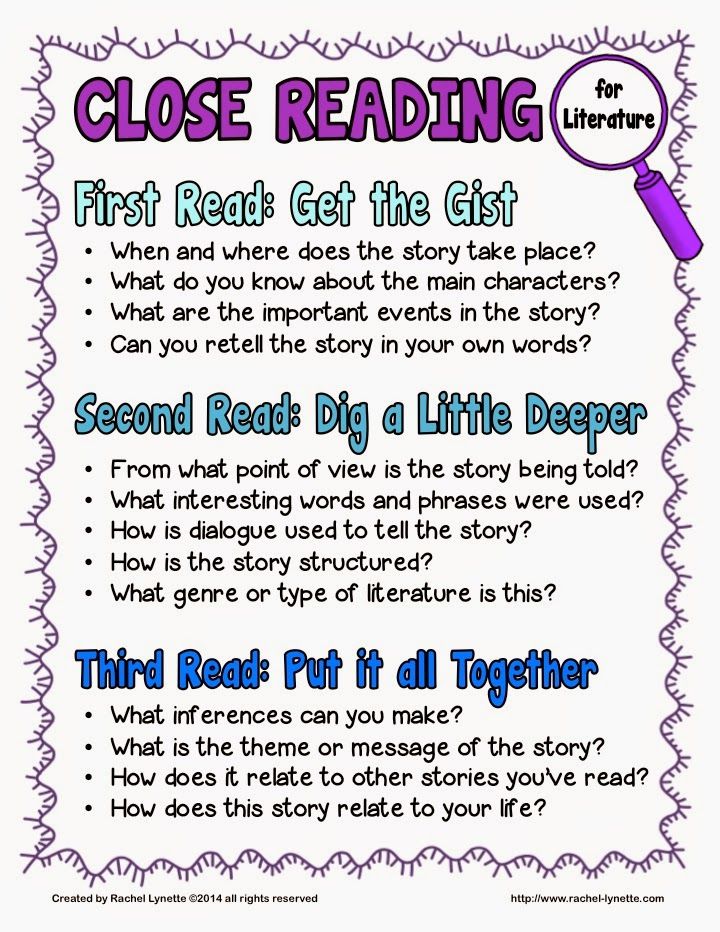
The teacher gives the students the task to write information in the margins with icons according to the following algorithm:
- V Familiar information
- + New information
- - I thought (thought) differently
- ? This interested me (surprised me), I want to know more
The essence of semantic reading strategies is that the strategy is related to choice, functions automatically at the unconscious level and is formed in the course of the development of cognitive activity. Reading strategy training includes the acquisition of skills:
- distinctions between message content types - facts, opinions, judgments, assessments;
- recognition of the hierarchy of meanings within the text - the main idea, theme and its components;
- own understanding - the process of reflective perception of the cultural meaning of information.
Mastering strategies occurs mainly in groups or pairs, which allows students to develop not only speech, but also communicative competence.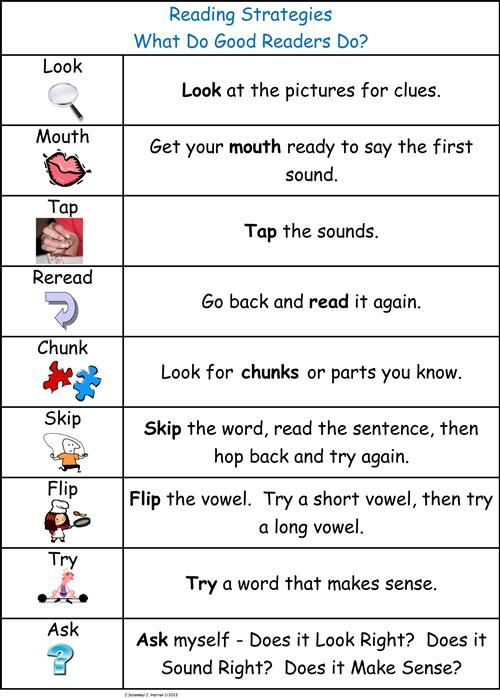
Strategy No. 6. Reading with an Euler-Venn diagram
Purpose: to form the skills of comparing and classifying, structuring information.
- Pupils read the text, carefully analyzing it.
- The teacher sets the task - to compare two or more objects, write the comparison data in the form of an Euler-Venn diagram.
Strategy No. 7. Senkan.
Purpose: to develop the ability of students to highlight the key concepts in what they read, the main ideas, to synthesize the knowledge gained, to show creativity.
The teacher offers to write a senkan on the keyword of the studied text.
Senkan - "blank verse", a slogan of five lines (from French Cing - five), in which the main information is synthesized.
Senkan structure.
- Noun (subject).
- Two adjectives (description).
- Three verbs (action).
- Four-word phrase (description).
- Noun (paraphrasing of the topic).
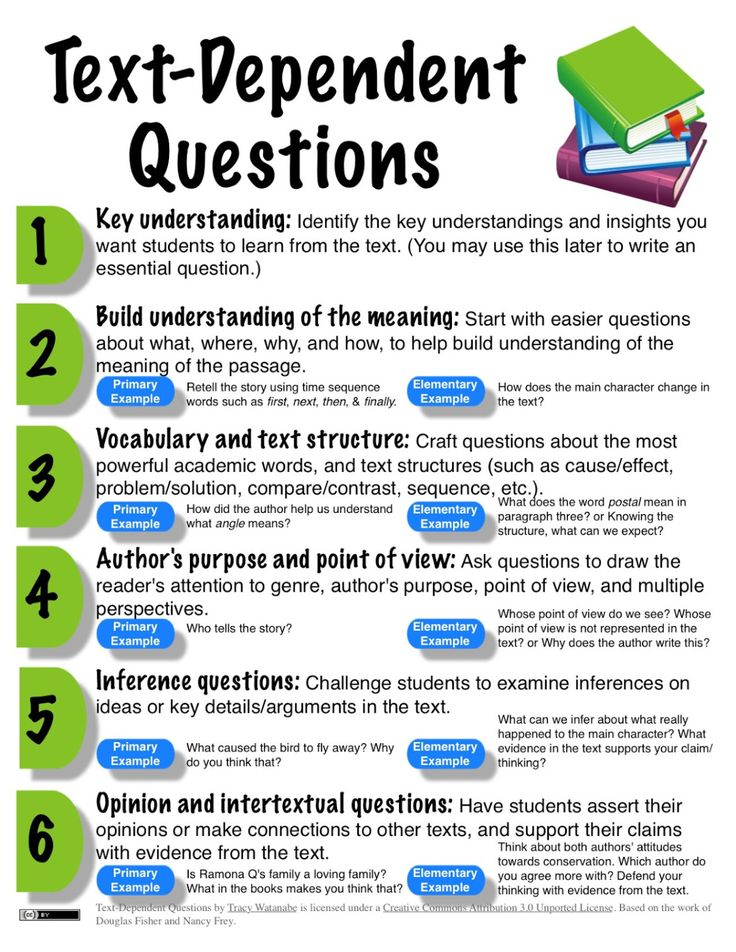
Given the strategies of modern approaches to reading, we can recommend the following to teachers:
- choose the most rational types of reading for students to learn new material;
- to form students' interest in reading by introducing non-standard forms and methods of working with text;
- determine the nature of the activities of various groups of students when working with a textbook;
- anticipate possible difficulties of students in certain types of educational activities;
- improve students' reading independence as they progress;
- organize various activities of students in order to develop their creative thinking;
- to teach self-control and self-organization in various activities.
Semantic reading strategies in elementary school to achieve meta-subject learning outcomes
References:
Kokoulina, SV Strategies for semantic reading in elementary school to achieve meta-subject learning outcomes / SV Kokoulina.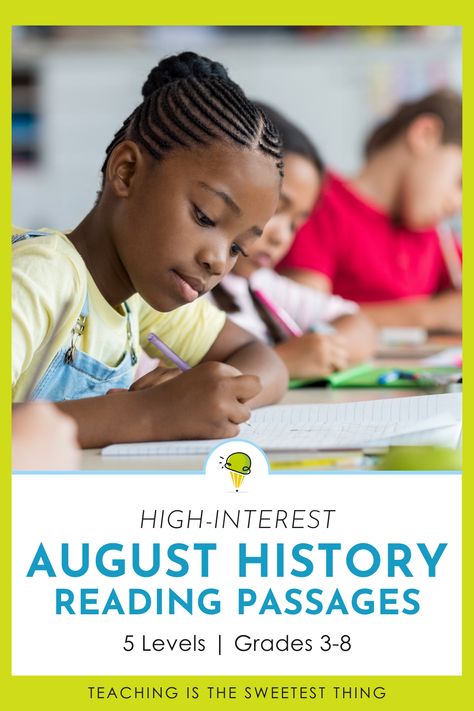 - Text: direct // Actual tasks of pedagogy: materials of the X Intern. scientific conf. (St. Petersburg, January 2019G.). - St. Petersburg: Own publishing house, 2019. - S. 48-51. — URL: https://moluch.ru/conf/ped/archive/320/14765/ (date of access: 11/25/2022).
- Text: direct // Actual tasks of pedagogy: materials of the X Intern. scientific conf. (St. Petersburg, January 2019G.). - St. Petersburg: Own publishing house, 2019. - S. 48-51. — URL: https://moluch.ru/conf/ped/archive/320/14765/ (date of access: 11/25/2022).
Key words: semantic reading, productive reading, literary reading, reading experience, developing lesson
A few years ago, the pedagogical community of our country was presented with a new methodological approach, called "meta-subject". In addition, new educational standards have entered the status of law, which, in addition to subject and personal, impose requirements on meta-subject results. It took time itself to rethink the accumulated pedagogical experience. Today, a person should be able to act in a non-standard situation, quickly and productively engage in unfamiliar activities, and conduct a constructive dialogue.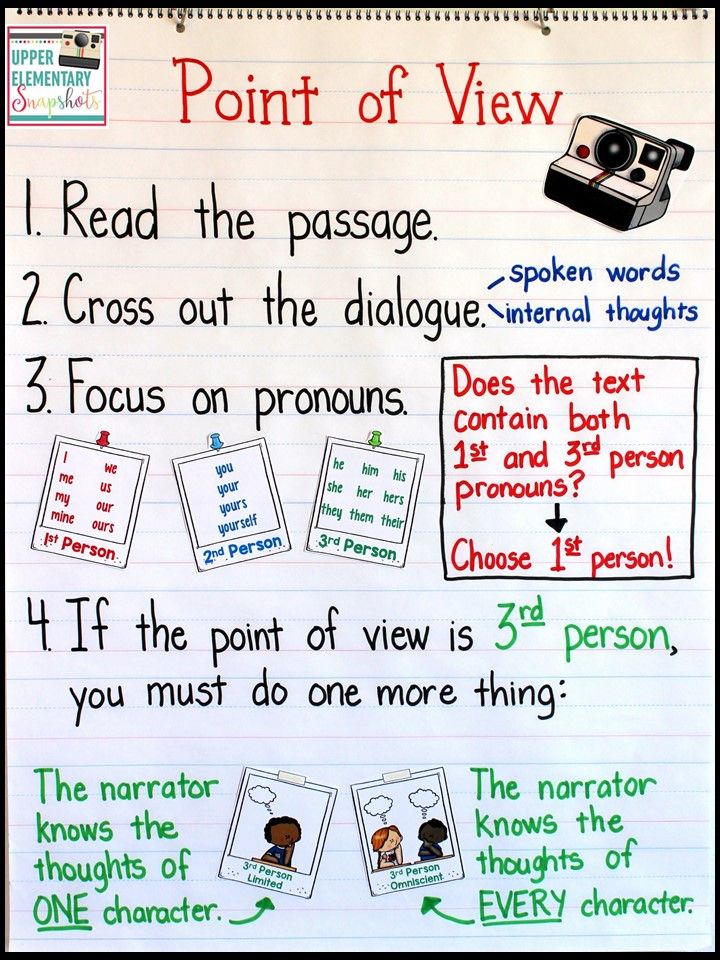 Only then will he be successful. The education system as a sphere of preparing a student for life changes its orientation from the accumulation of knowledge to the development of ways of thinking and activity, therefore, the new tasks set for the teacher could not be fully resolved only by means of traditional pedagogy. Arising the need to find new tools and methodological solutions
Only then will he be successful. The education system as a sphere of preparing a student for life changes its orientation from the accumulation of knowledge to the development of ways of thinking and activity, therefore, the new tasks set for the teacher could not be fully resolved only by means of traditional pedagogy. Arising the need to find new tools and methodological solutions
The educational process should be based on an activity approach, the purpose of which is the development of the student's personality with the active perception of educational material. This means that the main task of the teacher is to create conditions that provoke children's action.
Reading is a universal technique for obtaining knowledge in modern society, and understanding a text is a cognitive activity to establish its meaning based on the reader's experience.
That is why the technology of productive reading, developed by Professor N. Svetlovskaya, is gaining leading importance and contributes to the achievement of the results that are mentioned in the new standards.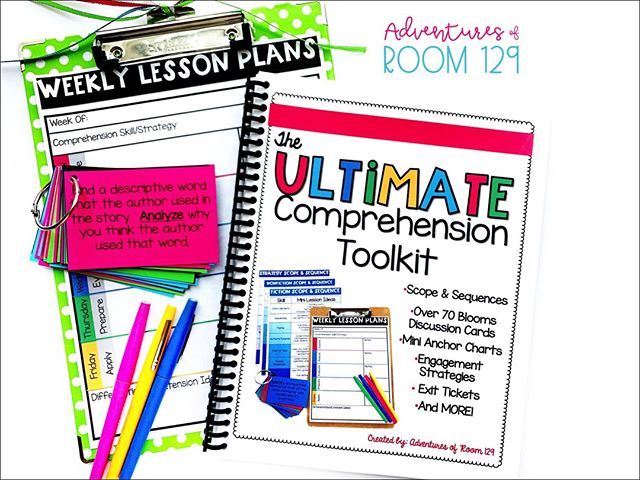 The technology is universal, it can be used in the lessons of any cycle. It is aimed at the formation of all universal educational activities: cognitive, communicative, regulatory, personal.
The technology is universal, it can be used in the lessons of any cycle. It is aimed at the formation of all universal educational activities: cognitive, communicative, regulatory, personal.
Productive reading is such reading, in which instead of the speed of reading and reproducing textural information, all types of textual information (factual, conceptual, subtext) are reread, a deep understanding of the text, one's own interpretation of . Solving many problems of the modern education system, the technology of productive reading could act as a means of achieving all kinds of results, including meta-subject ones. But, despite the high developing potential of productive reading technology, it is practically not represented in school textbooks for literary reading, and there are also no methods for using this technology at different stages of a literary reading lesson in elementary school. To solve this contradiction, it was necessary to select various methods of this technology and test their use at various stages of the literary reading lesson, which became the goal of my experience.
A detailed study of the theory of the question made it possible to conclude that the technology of productive reading fits well into the structure of a developing lesson and can be used at any stage. When building a model of a developing lesson, I somewhat modify the traditional structure of a literary reading lesson, trying to take into account the requirements for a modern lesson and the technological stages of productive reading as much as possible. Experience shows that the most effective option for the formation of universal educational activities is the variant of a productive lesson in literary reading, built according to scheme .
If the chosen system is the foundation of the lesson scenario, then filling its content with productive reading techniques is its arrangement, helping the student to understand the essence of what is being studied, giving beauty and emotionality to the lesson, activating thought processes.
A distinctive feature of the proposed structure of the lesson at the stage of motivation is the use of such a technique, as anticipation .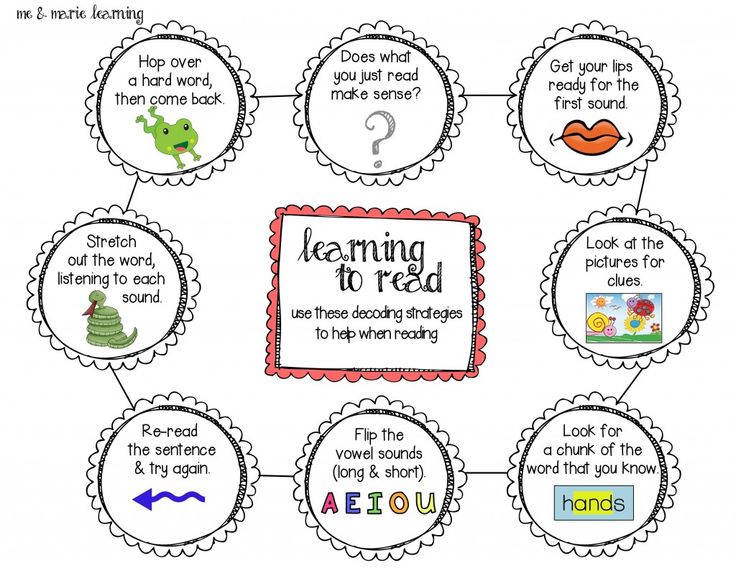
Anticipation (anticipation, prediction of the upcoming reading). Determining the semantic, thematic, emotional orientation of the text, highlighting its heroes by the title of the work, the name of the author, key words, illustrations preceding the text based on the reader's experience.
While working with text before reading, you can use the following techniques:
– “Tree of predictions”;
‒ Working with illustrations
- "Revived paintings" - work with reproductions of paintings that reflect the era, but are not illustrations for this work;
- Photo-eye - lexical work - work with words that are not clear to students, their interpretation, determination of the content of the work;
‒ "Associative Bush" - determination of the topic of the lesson, the title of the work by a group of words;
‒ "Delayed Guess"
‒ Book cover design
The result of the work at this stage is the definition of the topic, goals and objectives of the lesson, which are formulated by the students themselves.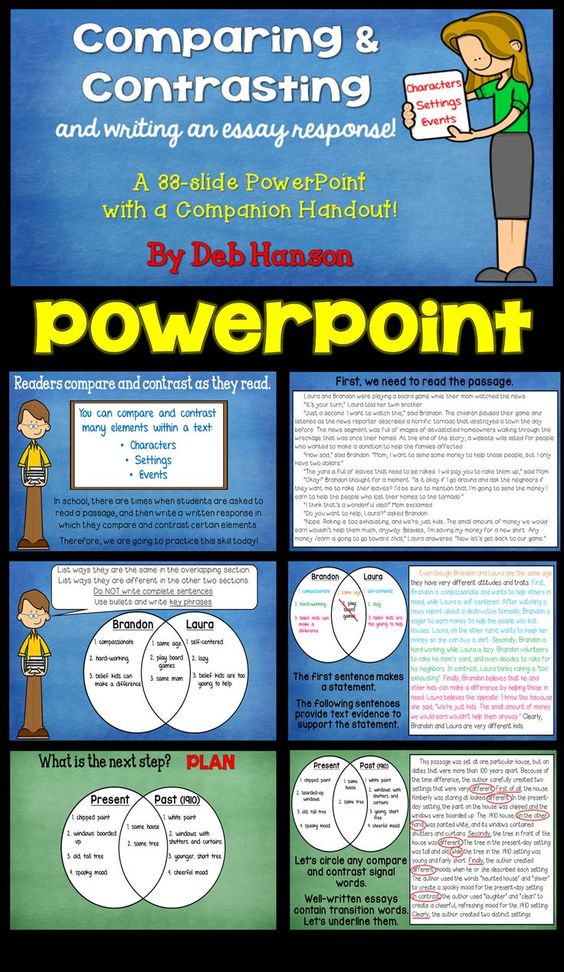
The next step is to work with the text while reading.
The purpose of this stage: understanding the text at the factual and conceptual level.
"Dialogue" of students with the author of a literary work or scientific text is a method of working with a text while reading it.
It is extremely important to teach students to see direct and hidden author's questions in the text. As a rule, the writer himself answers them. In any case, these questions require stopping, thinking, guessing answers, and then checking their accuracy in the course of further reading. The questions that arise suggest the appearance of answers-assumptions and self-examination in the course of further reading. For the symbol, the first letters of the mini-techniques are used.
Commented reading - this is a reading, accompanied by an explanation, interpretation of the text in the form of explanations, reasoning, assumptions.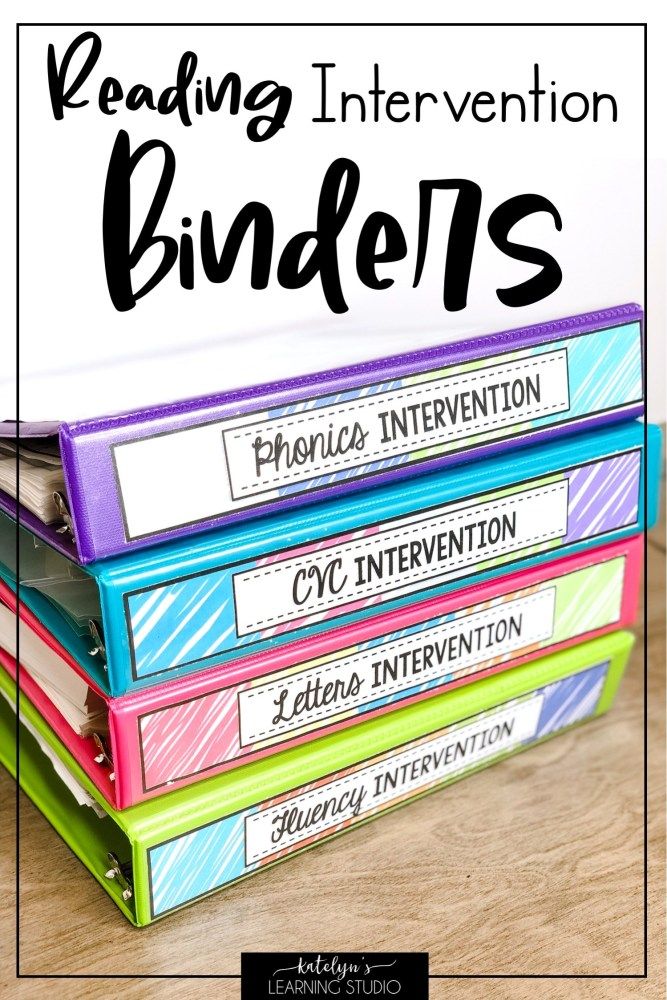 You need to comment on the text in the place where it is really necessary, and not after the sentence or fragment has been read to the end. Therefore, the reading of the child can be interrupted at any time. In no case should a child’s reading be interrupted by the words: “Stop!”, “Enough!”, “Enough!”, “Stop here!” etc. Interruption of a child's reading should occur naturally.
You need to comment on the text in the place where it is really necessary, and not after the sentence or fragment has been read to the end. Therefore, the reading of the child can be interrupted at any time. In no case should a child’s reading be interrupted by the words: “Stop!”, “Enough!”, “Enough!”, “Stop here!” etc. Interruption of a child's reading should occur naturally.
Another distinctive feature of the proposed lesson structure is comprehension block and information processing in interaction . This is a kind of training to overcome the inertia of thinking, which requires students to turn their thoughts into a non-stereotypical turn.
Here I use tasks for putting forward hypotheses, unusual use of objects, finding patterns.
For example, my students are very fond of such a form of work as the Literary Quest. Quest is a type of game that requires the player to solve mental problems in order to progress through the story.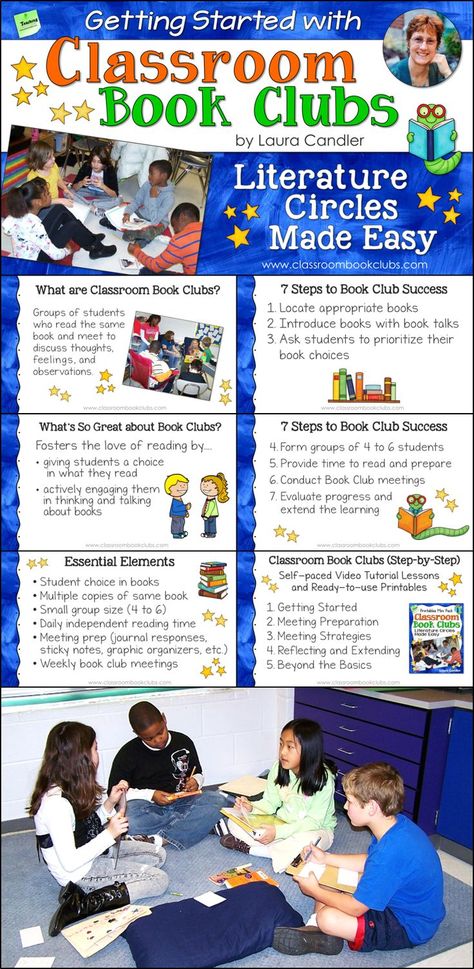
Modern Internet technologies also help to maintain the interest of students. On the class website (http://svkokoulina7.jimdo.com/) there is a special page "We are readers", where we hold various promotions and competitions. On the online board, students post notes and photos about the books they read
Thus, at this stage, children have the opportunity to generate ideas, offer non-standard methods of action, plan their activities, organize an experiment, participate in group work, and interact productively. The technology of productive reading provides for the possibility of applying the acquired knowledge in non-standard situations.
The use of productive reading technology in the classroom and beyond can improve the results of students mastering the program material. Monitoring the results of schoolchildren's educational activities shows a positive trend.
The results of my students are the best answer to the question “what do I use it for?”.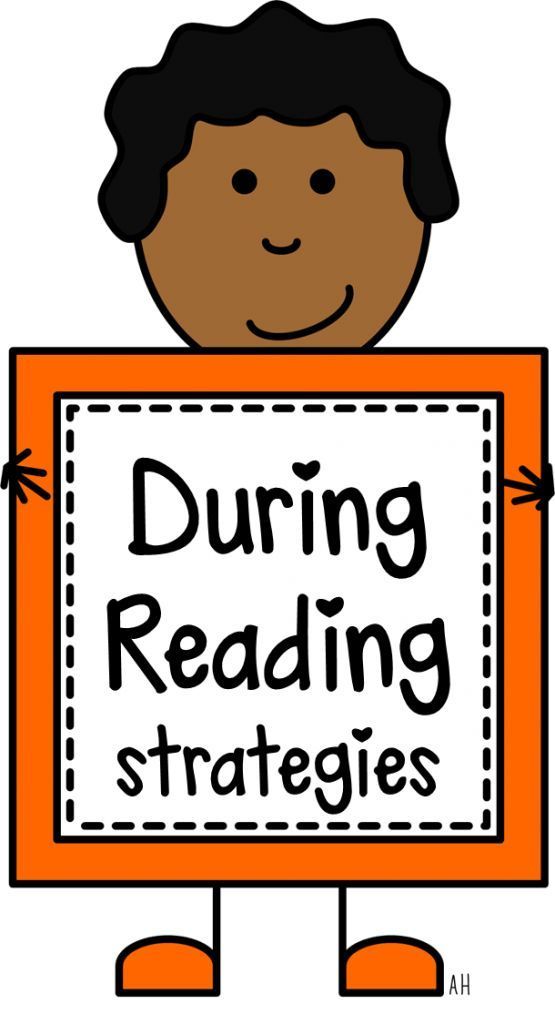
Today, performance evaluation in quantitative terms is considered convincing, but not everything can be measured by numbers (yes, for sure, it is not necessary). Meta-subject results are results for the prospect of a successful independent life of our children. In addition, when using the technology of productive reading, students show creativity in thinking, initiative, resourcefulness, activity, the ability for emotional perception and moral choice, take responsibility for interaction and results. This means that this technology can be a means of achieving metasubject results.
I share my accumulated experience in using the technology of productive reading with my colleagues: I conduct open lessons, master classes at different levels. Among my publications there is a description of the use of productive reading technology, and the development of lessons, and a master class. Speaking about the means of forming students' universal learning activities, competencies, the ability to work with text and information in other disciplines and the surrounding life, the proposed methodological solutions should also be universal.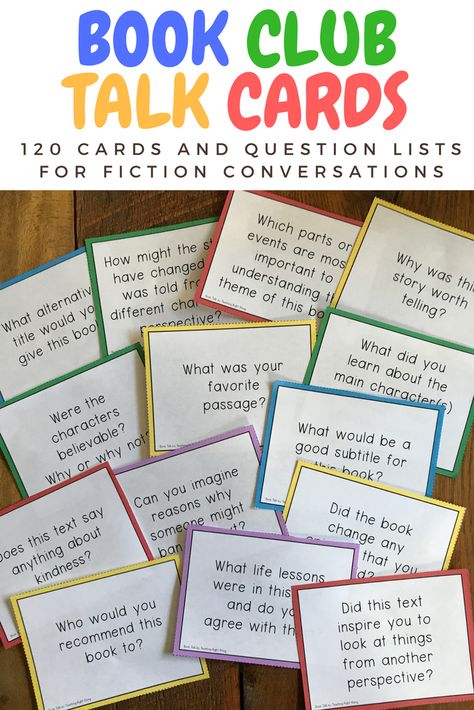 This technology can be used by a teacher of any subject. Presenting my work experience, I wanted to show that the technology of productive reading in the structure of a modern lesson is a universal means of implementing the Federal State Educational Standard, creating conditions for achieving all kinds of results, and preparing students for independent adult life.
This technology can be used by a teacher of any subject. Presenting my work experience, I wanted to show that the technology of productive reading in the structure of a modern lesson is a universal means of implementing the Federal State Educational Standard, creating conditions for achieving all kinds of results, and preparing students for independent adult life.
Literature:
- Alekseevskaya A. T. article: Formation of reader's interests of younger schoolchildren. - M., 2008. p. eighteen
- Zobnina M.A. How to awaken an interest in reading in a younger student? // Primary School. - 2007. - No. 8. - S. 35–43.
- Lazareva V. A. Literary reading in modern school: collection of articles. - / Comp. V. A. Lazareva. M .: Pedagogical University "First of September", 2005 S. 40
- Nitalimova L. V., Semenova S. N. Development of the reader's interest of younger schoolchildren. — M.: Mentor. - 2007. - No. 1. - S. 11-13.
- http://iem.
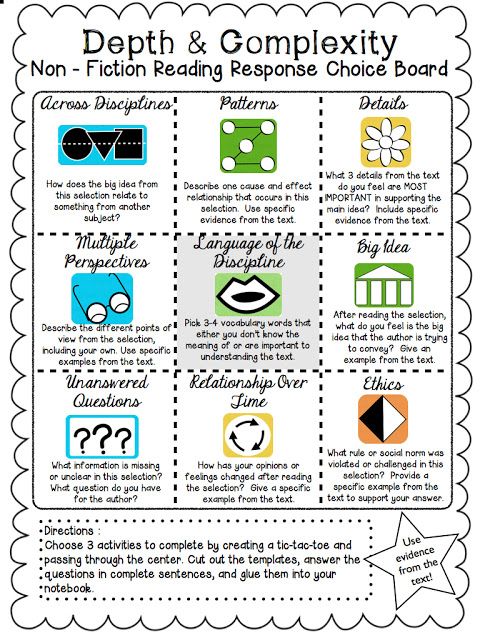 natm.ru/mentor/0107_nitalimova.html
natm.ru/mentor/0107_nitalimova.html - Svetlovskaya N. N. Learning to read and the laws of reader formation. // Primary School. - 2003. - No. 1. - S. 11–18.
Basic terms (automatically generated) : productive reading, literary reading, use of technology, developing lesson, student, reading experience, type of results, further reading, distinctive feature, modern lesson.
Keywords
literary reading, productive reading, semantic reading, reading experience, developmental lessonSimilar items
Technology productive reading as a means of forming.
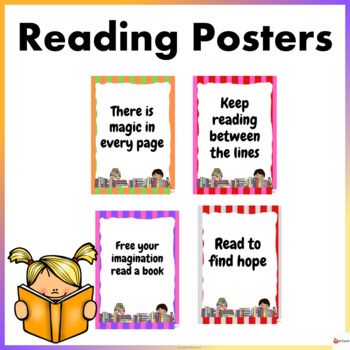 ..
.. text, further reading , productive reading , reading interpretation, reading children, commented reading , work. Formation reader culture junior schoolchildren for lessons extra-curricular reading . Technology productive reading in...
Improving the efficiency of
lessons literature reading for...Improving the efficiency of lessons literary reading is the key to improving the quality of education and
When planning lessons I rely on technology , developed by the authors of the textbook N. N
Developing aspect: develop speech students , creative thinking .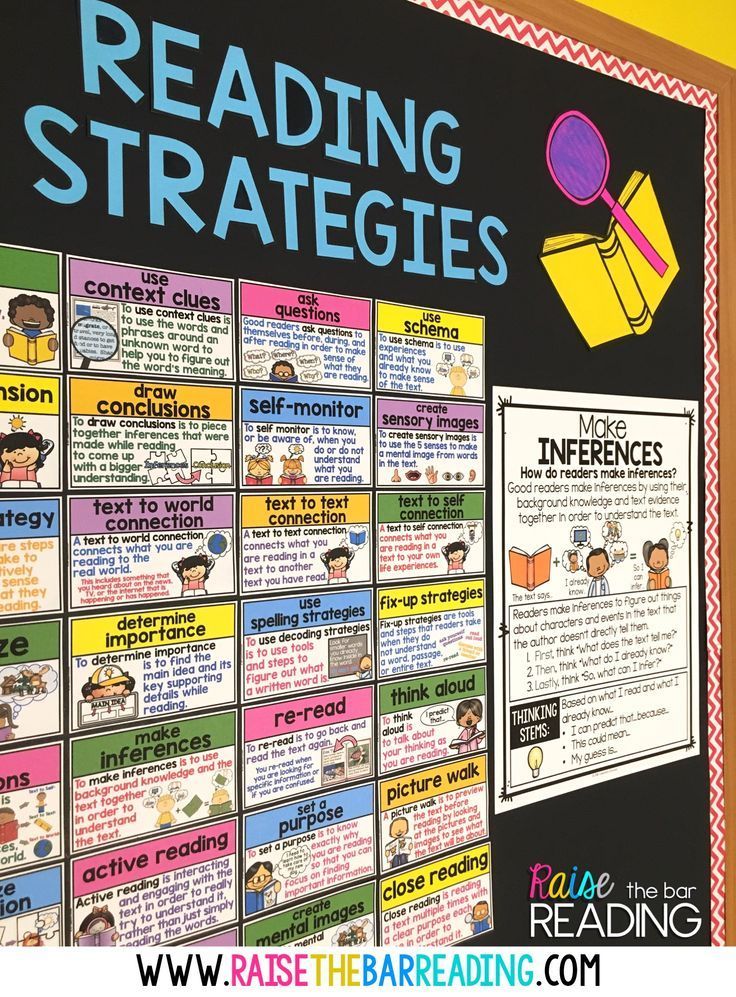 ..
..
Technology productive reading in professional...
Technology productive reading today continues to be an active subject
text, further reading 9 , productive reading , reading interpretation, reading
A modern teacher must apply various technologies , teaching methods and techniques...
Functional reading teaches first of all to understand what and why we read and where it can be done
What kind of work with text will help modern lesson show children the way to the position
Expressive reading children, including reading by roles, intonation, emphasis .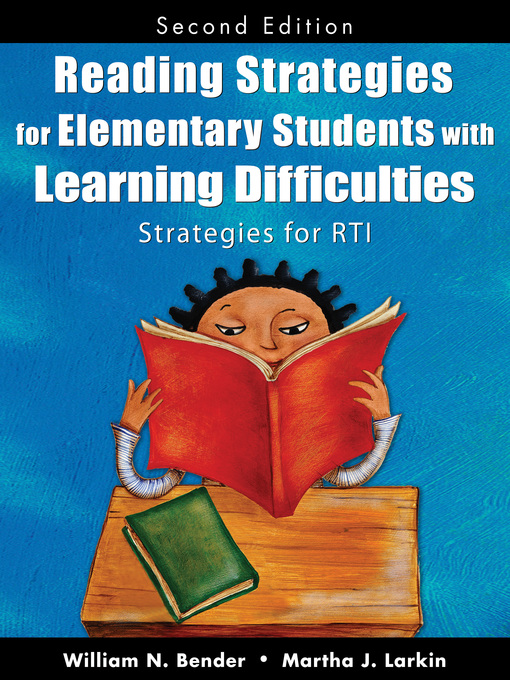 ..
..
Formation of
reading competence of junior schoolchildrentext, further reading , productive reading , reader interpretation, reading children commented reading , work. Formation reading culture of junior schoolchildren in lessons extra-curricular reading .
Technology productive reading as a way to resist...
Technology has three stages - before reading , during reading , after reading with subtraction
The purpose of the third stage of working with text after reading is to correct the reader
I believe that technology productive reading teaches children to focus their attention and .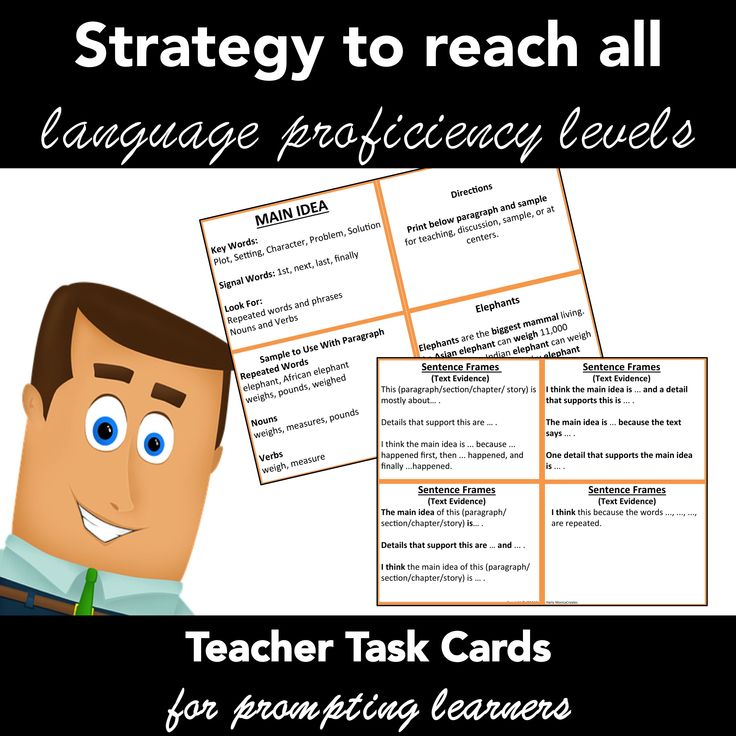 ..
..
At lessons literature reading using illustration Pupils studied
A new approach to Lessons Literary and Extracurricular Readings with Use ICT gives
Literary Reading - The process is especially creative, 9000 In the 1st grade at lessons literary reading it is necessary to teach children to choose the topic of the project, to determine whether it is individual or in Basic terms (automatically generated): project task, literary reading , frame lesson
Use of technology design tasks by literature ... 

